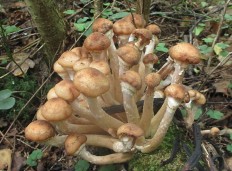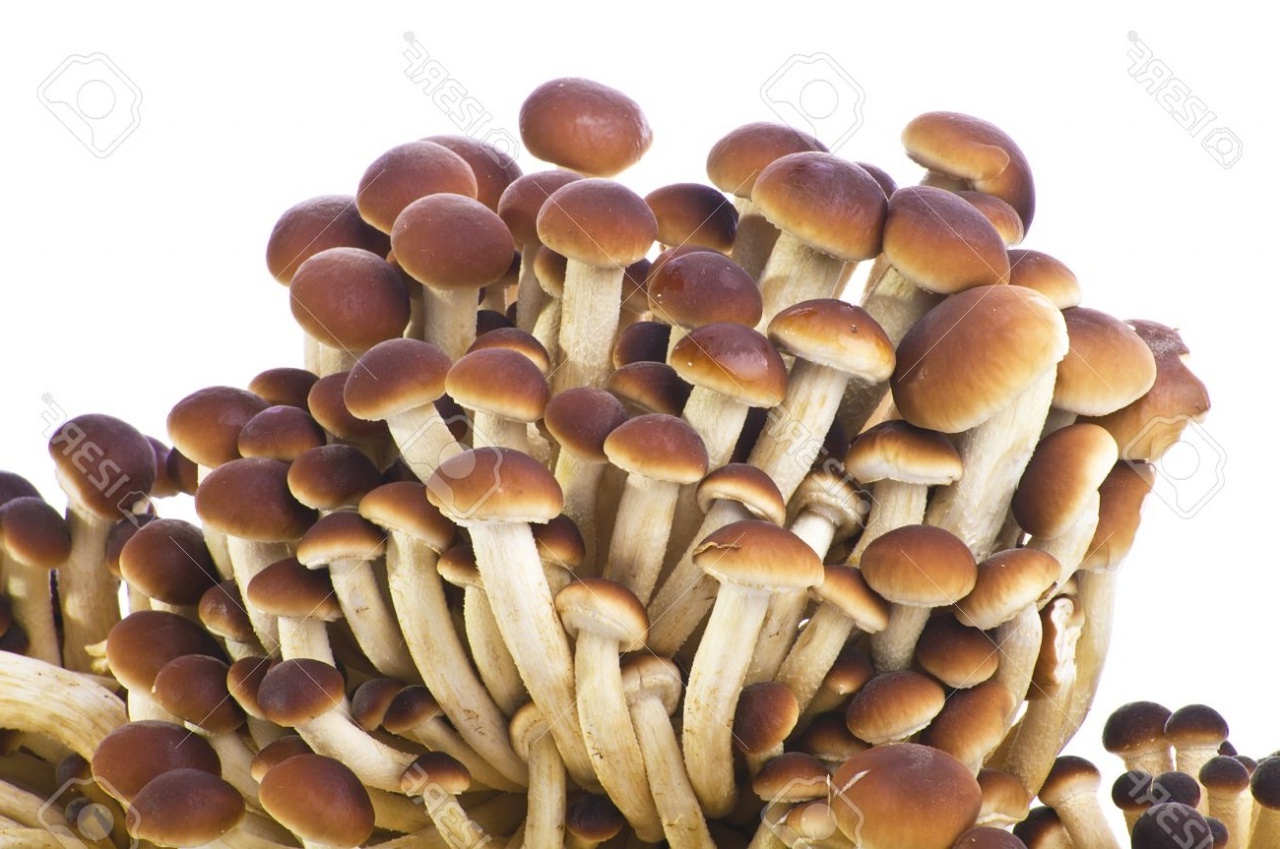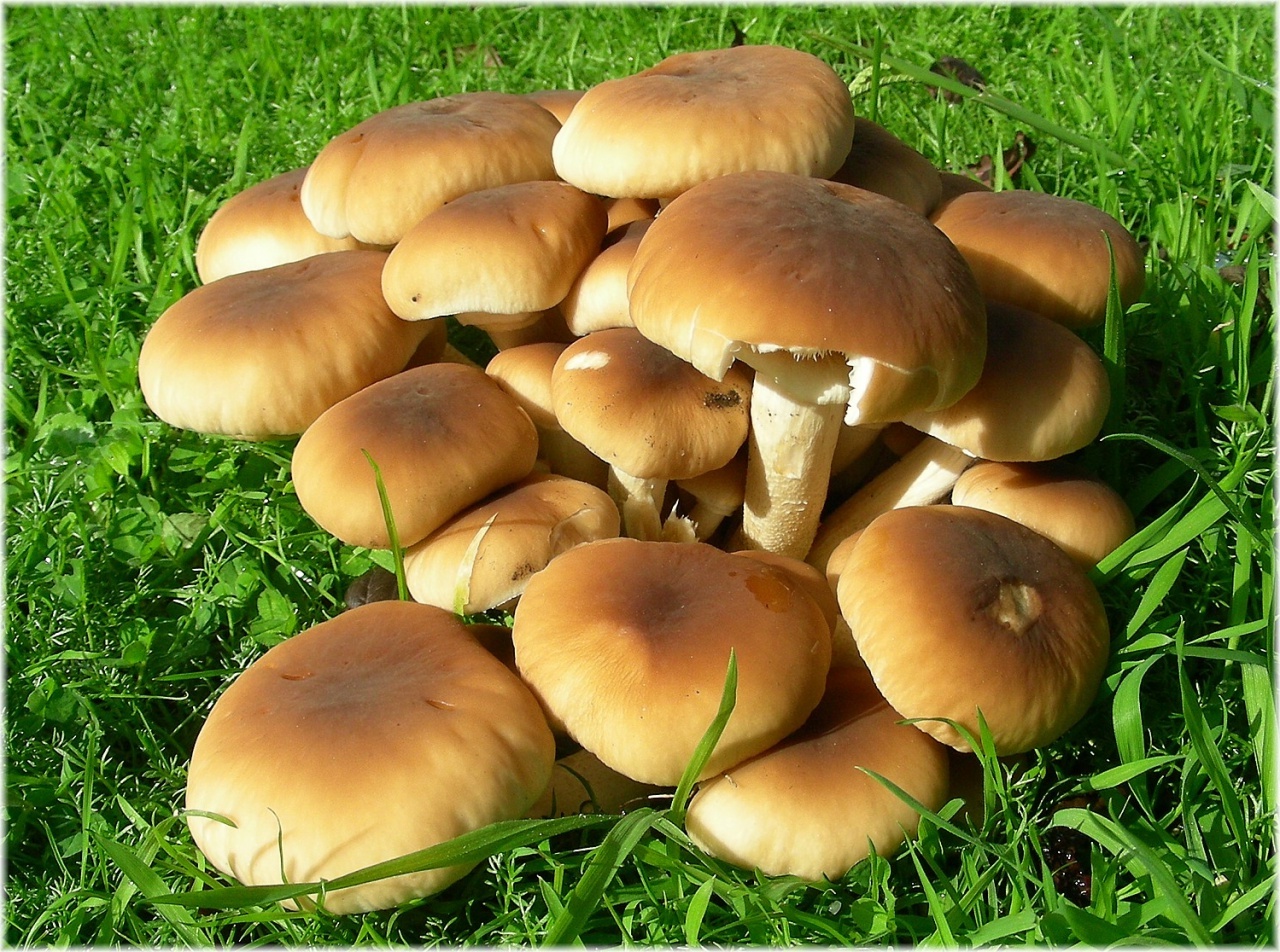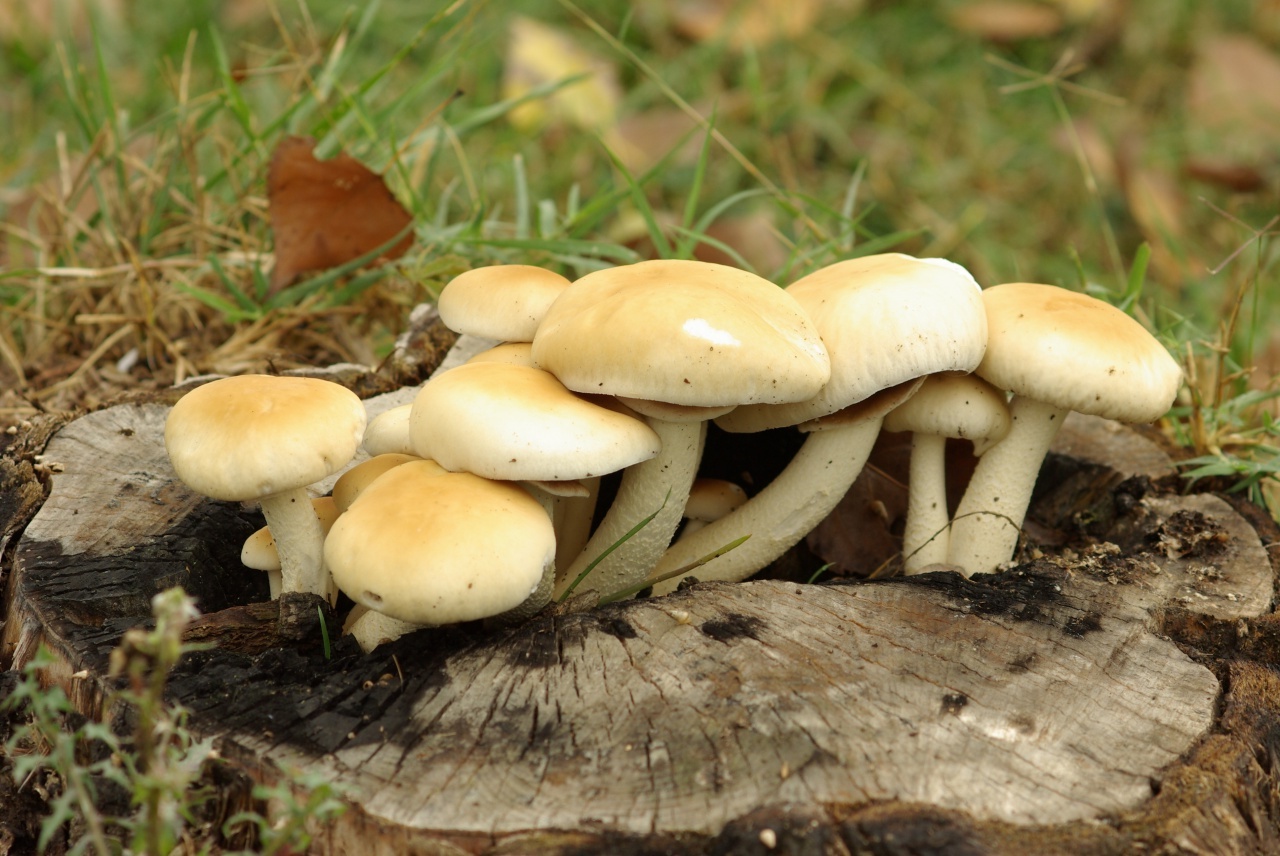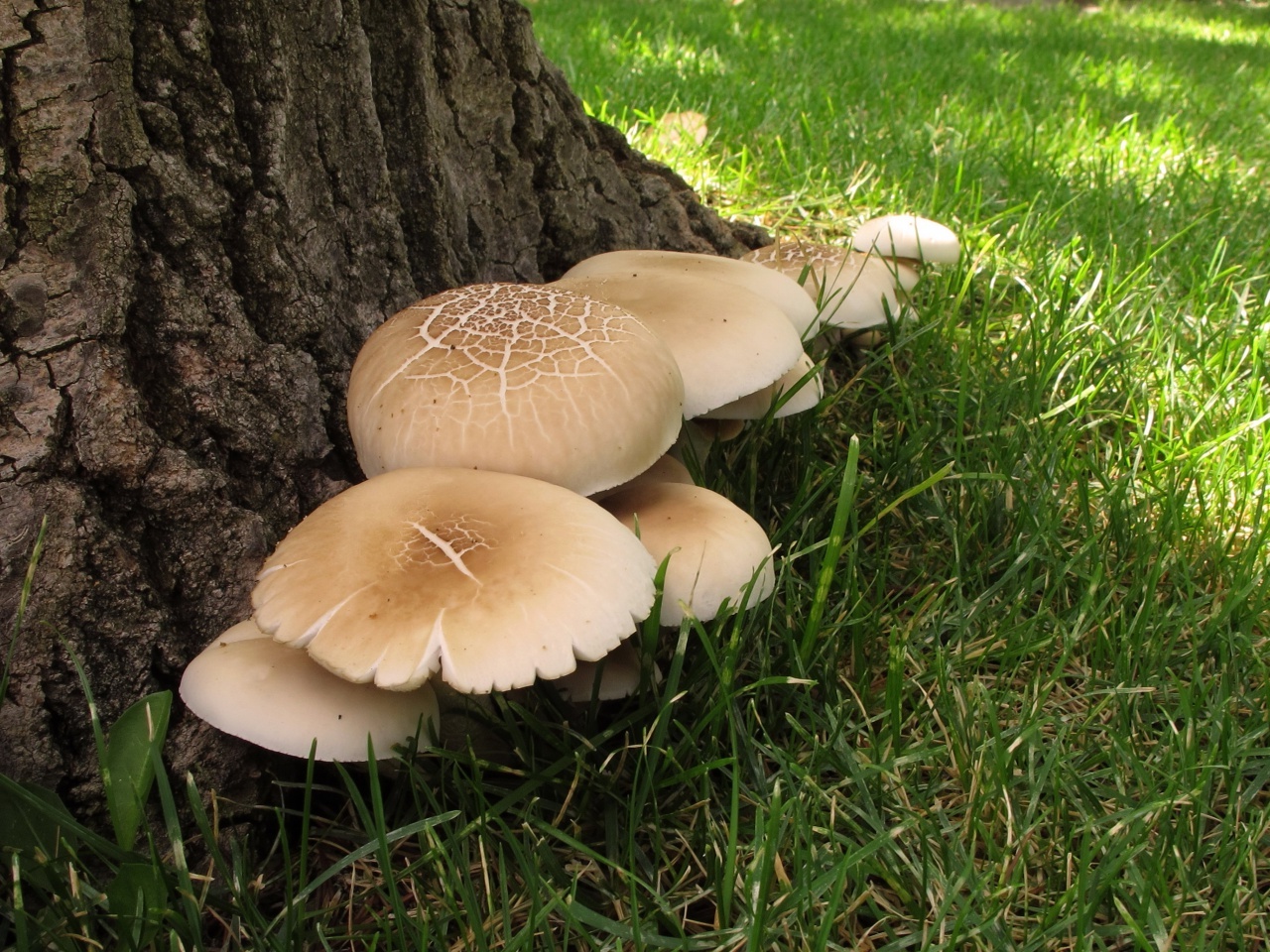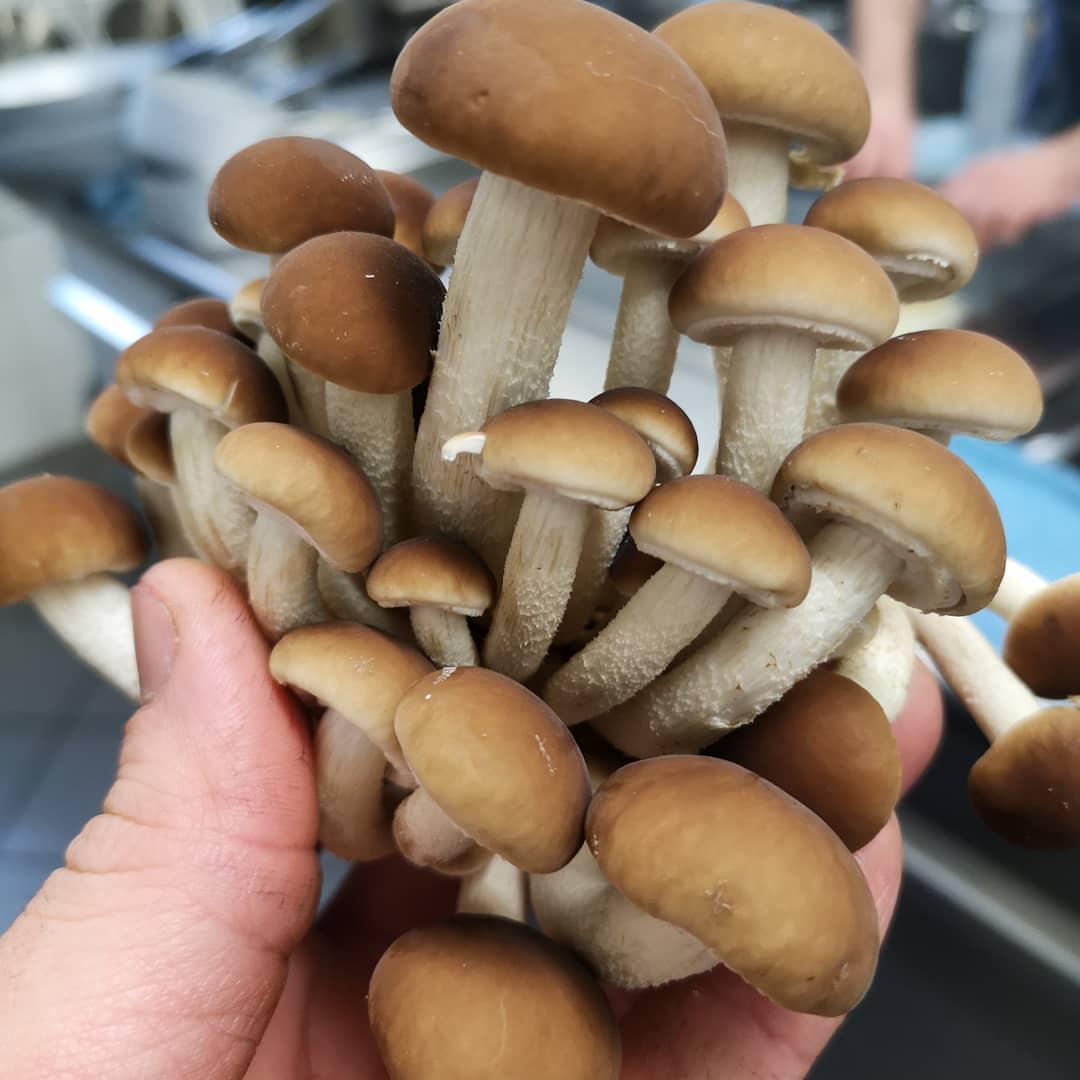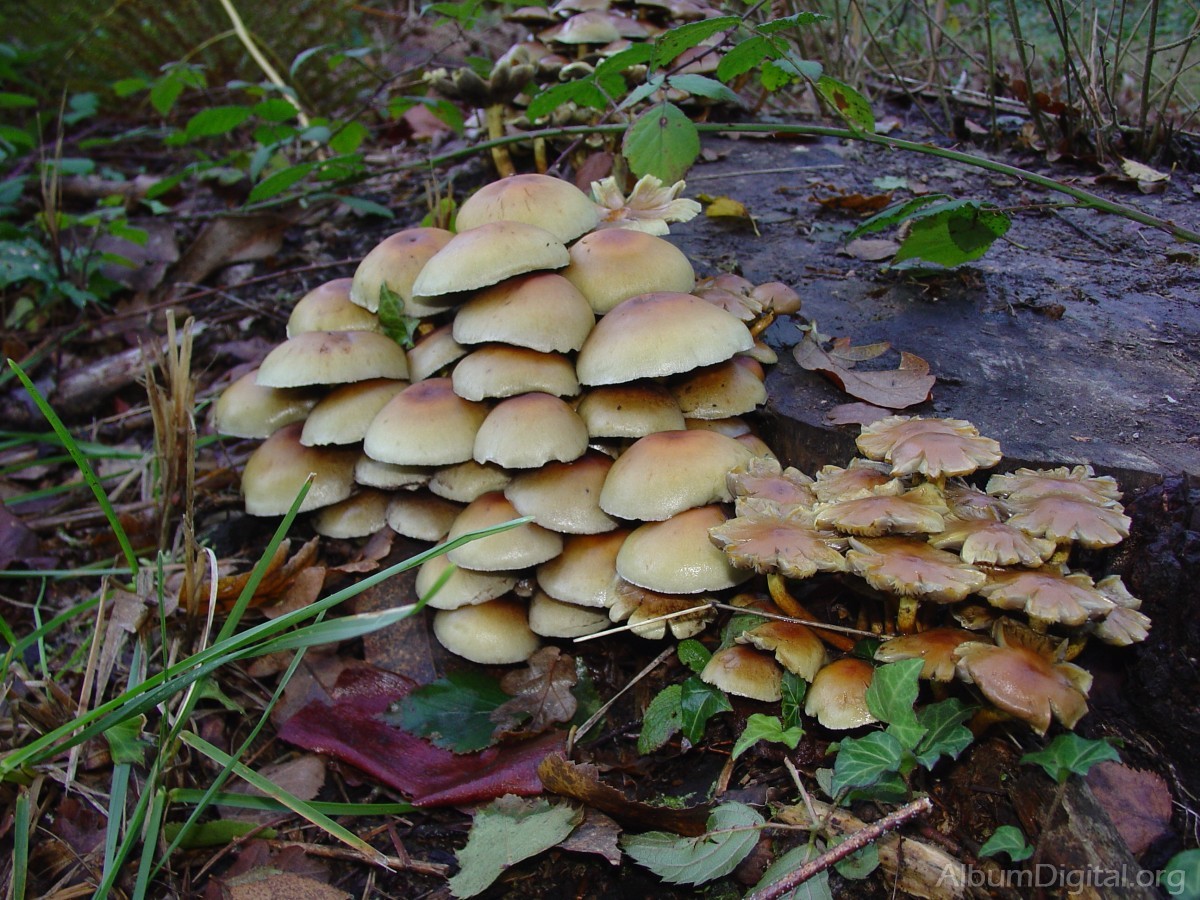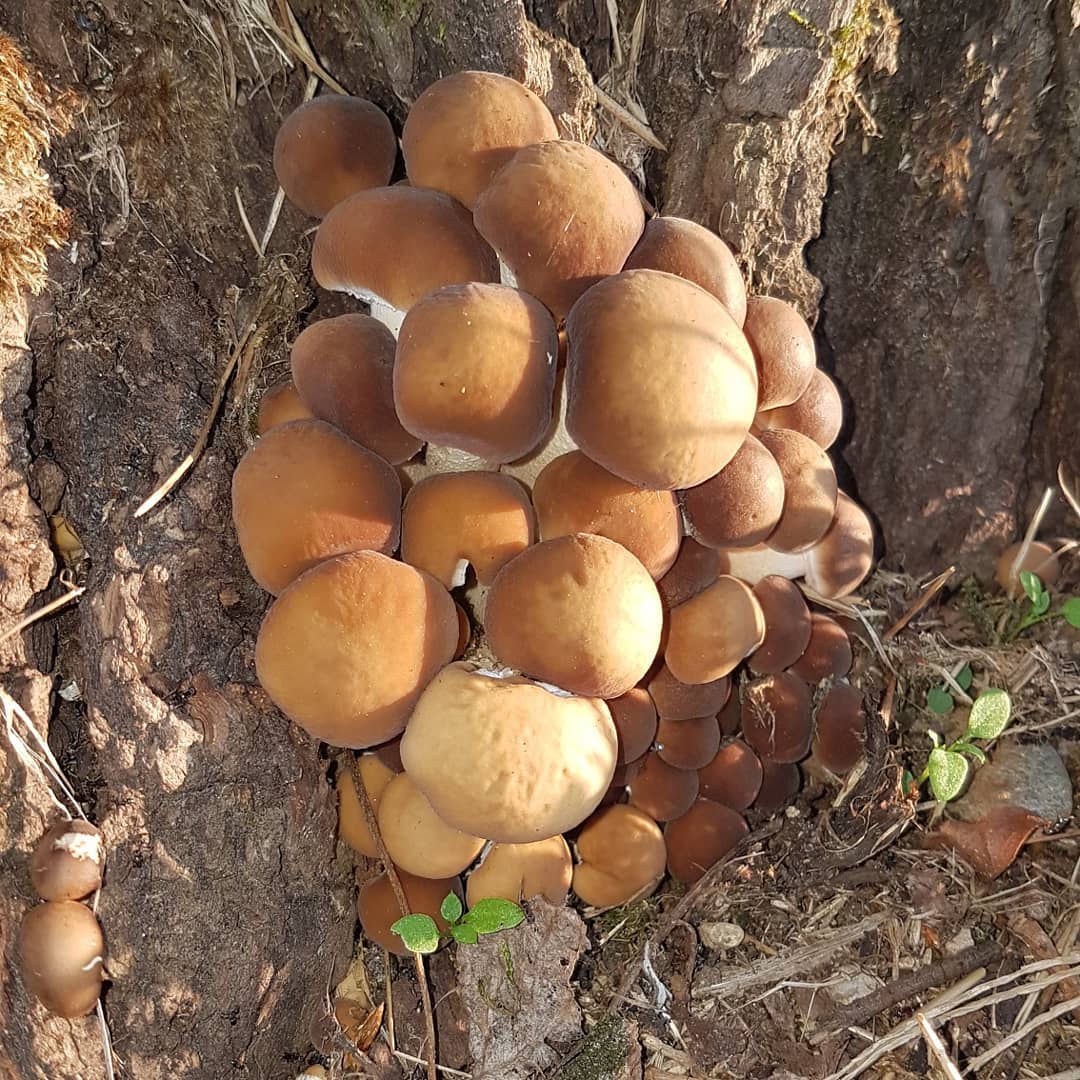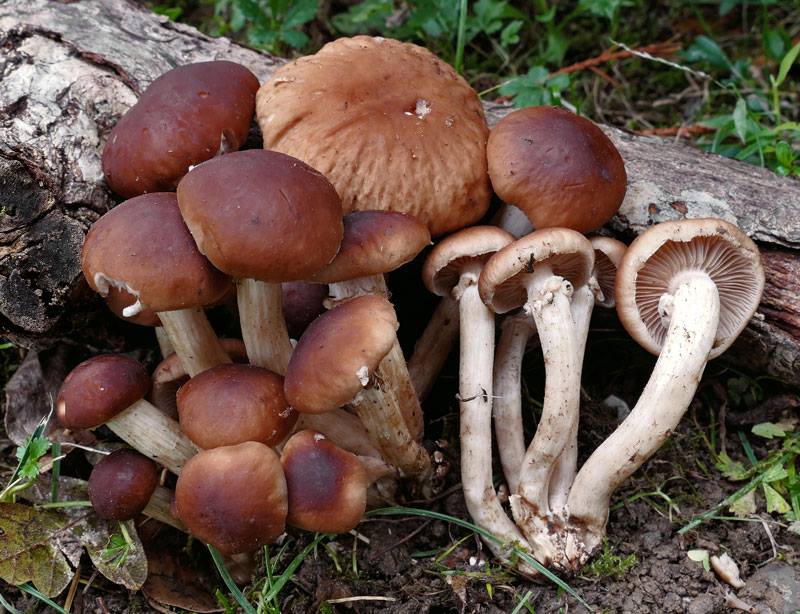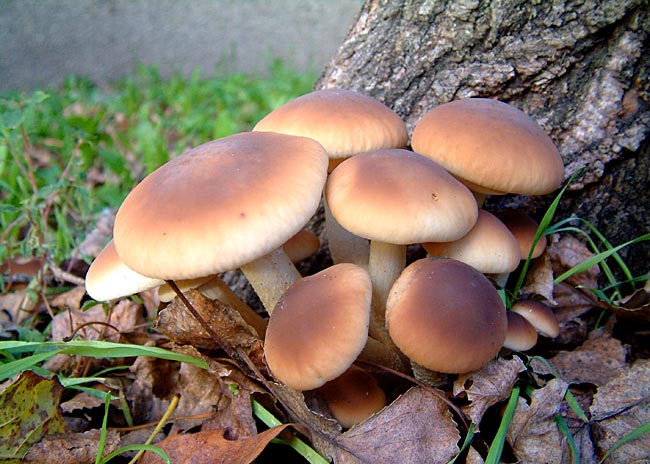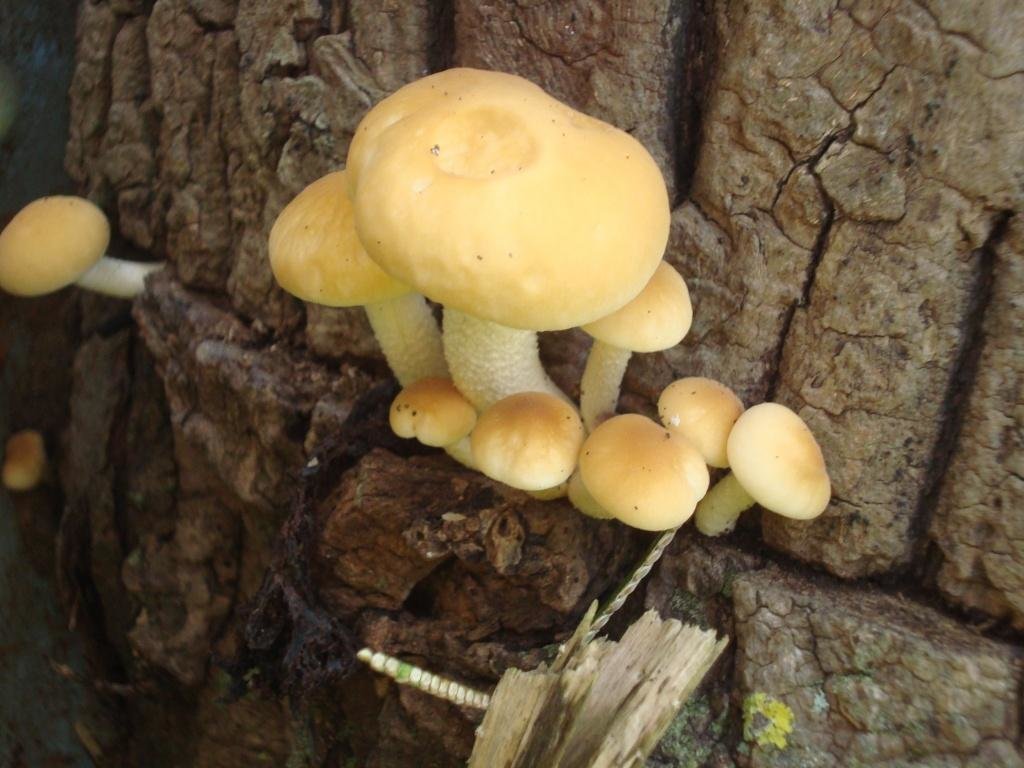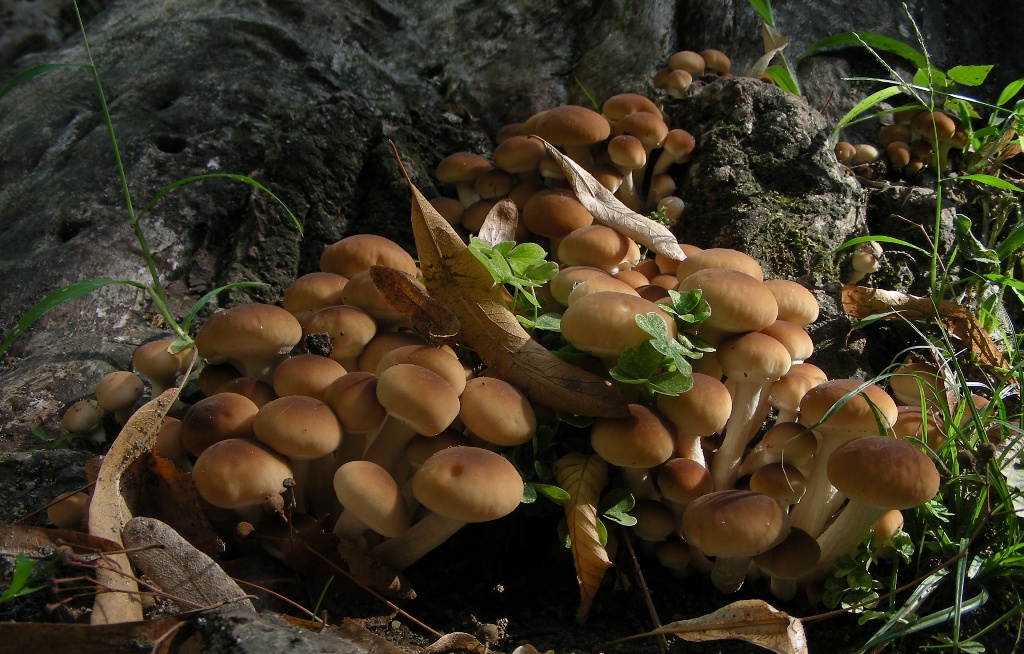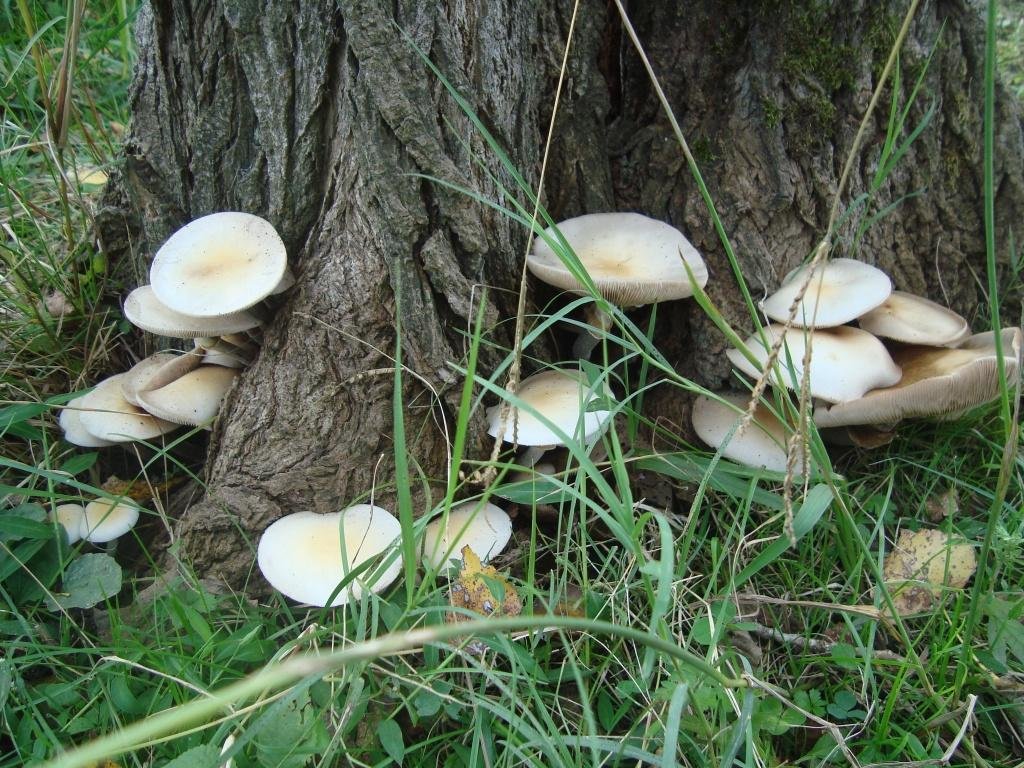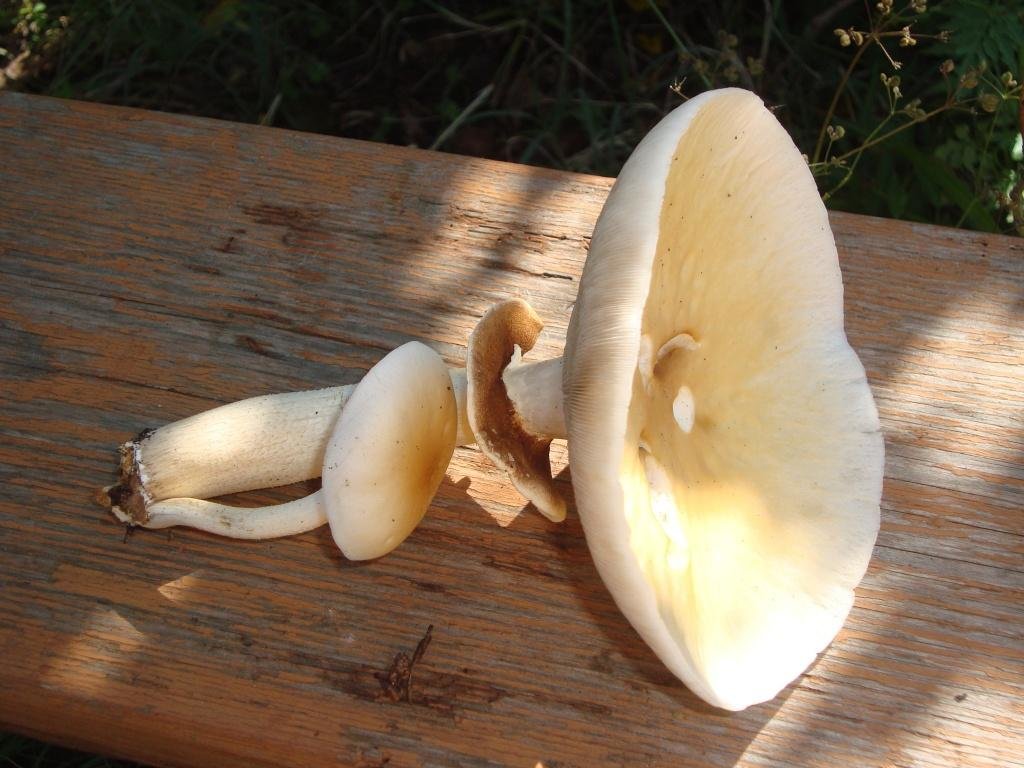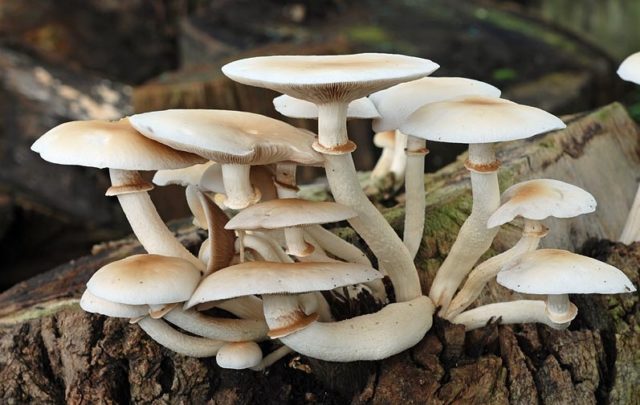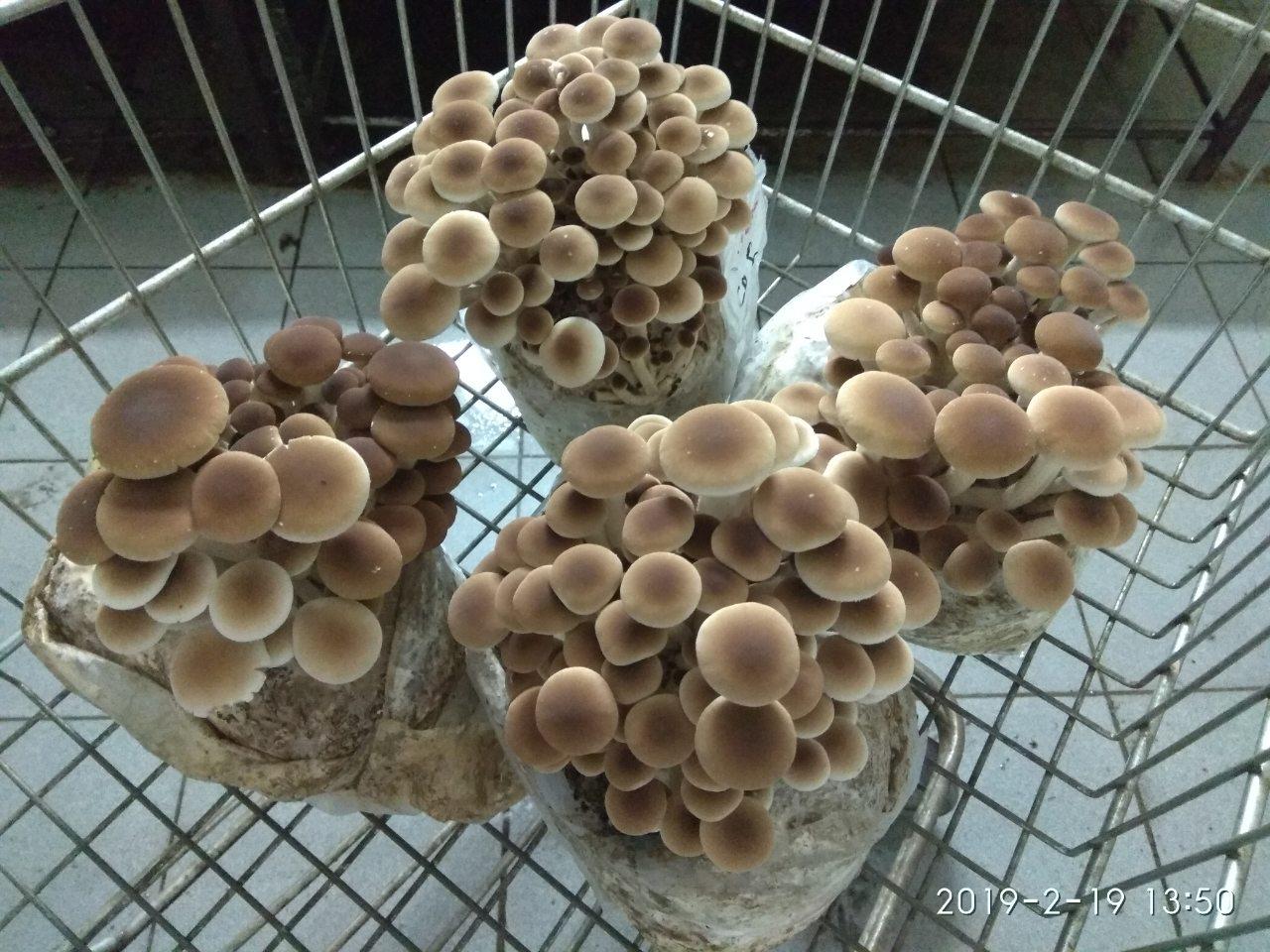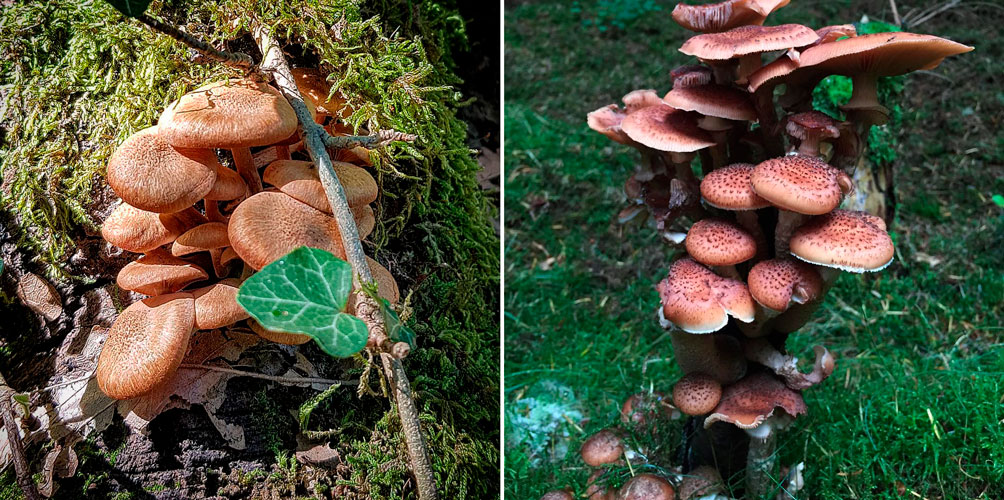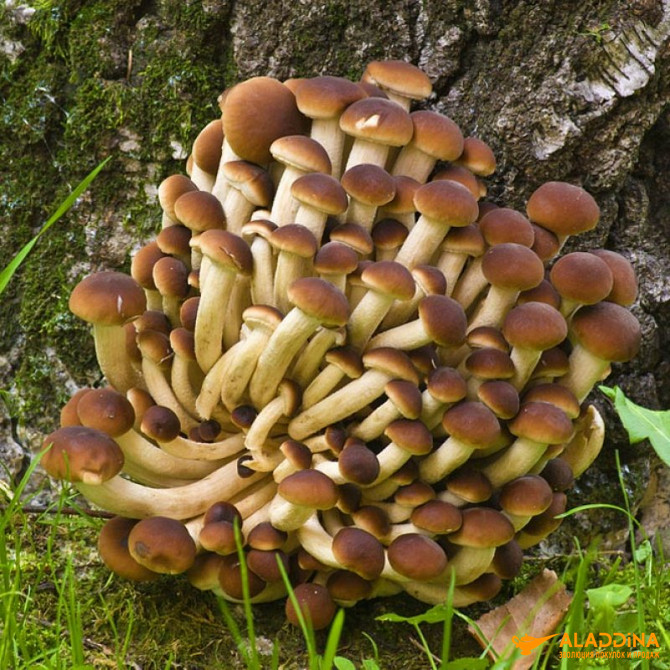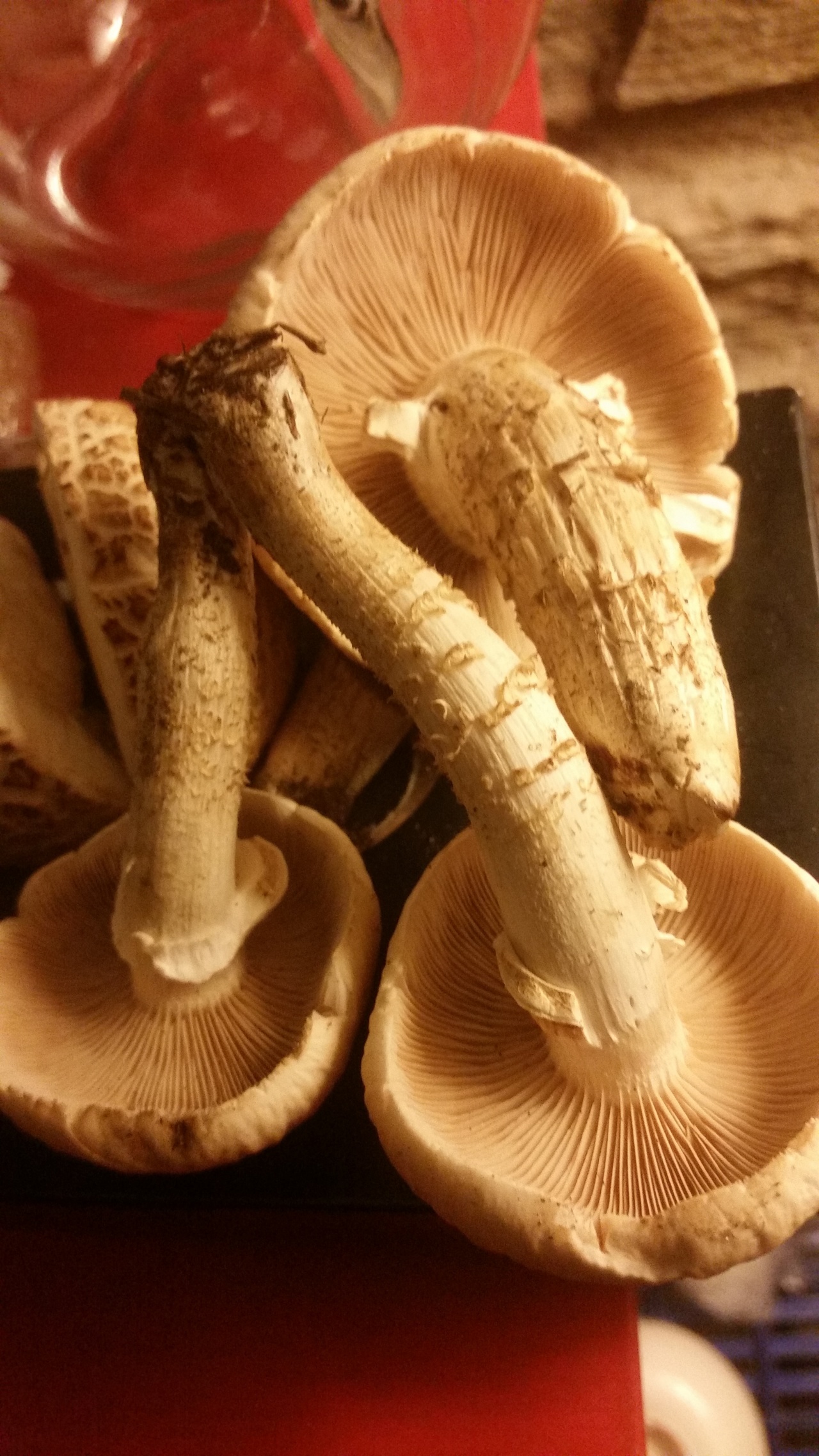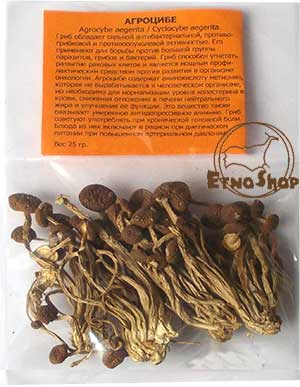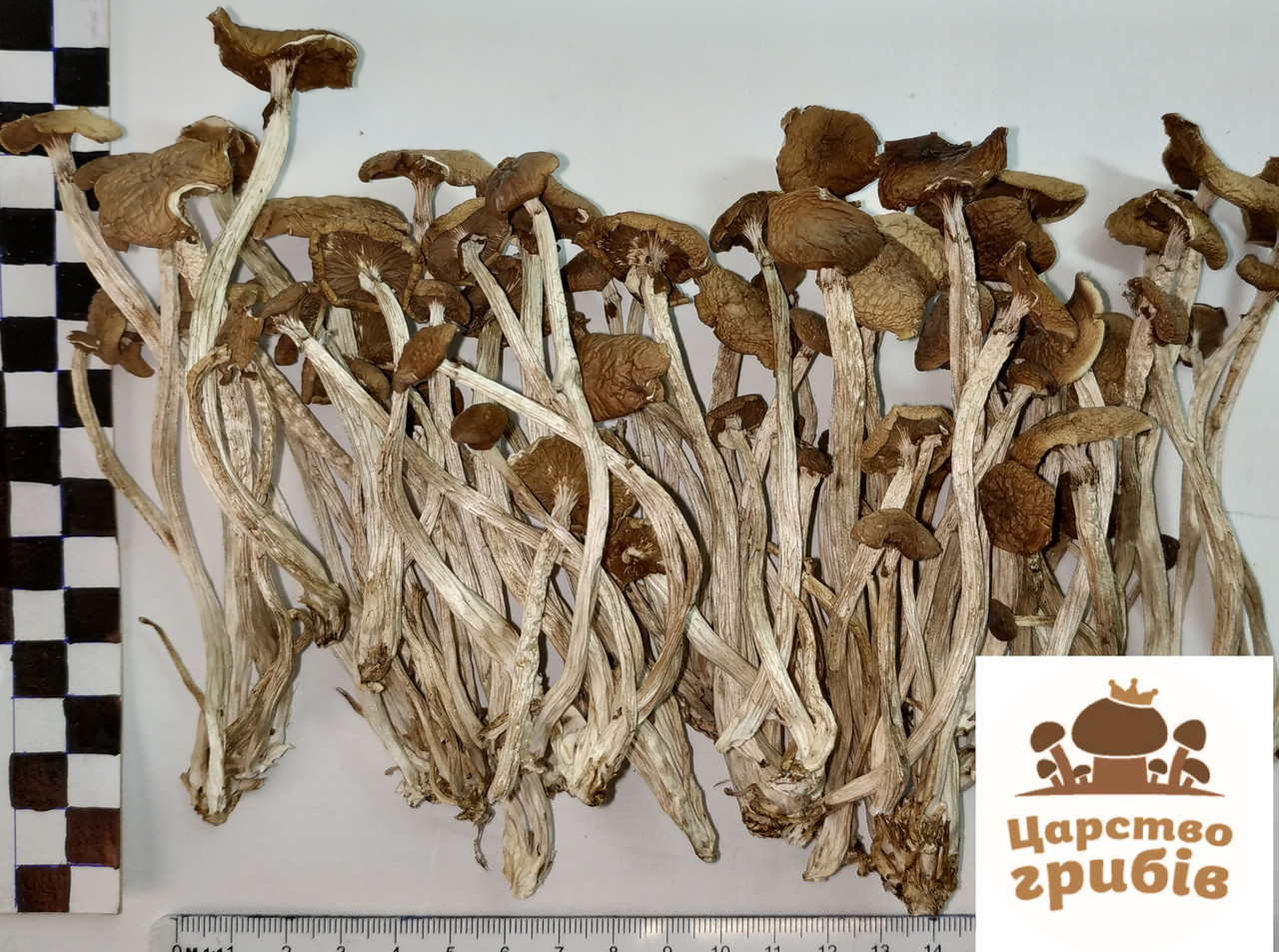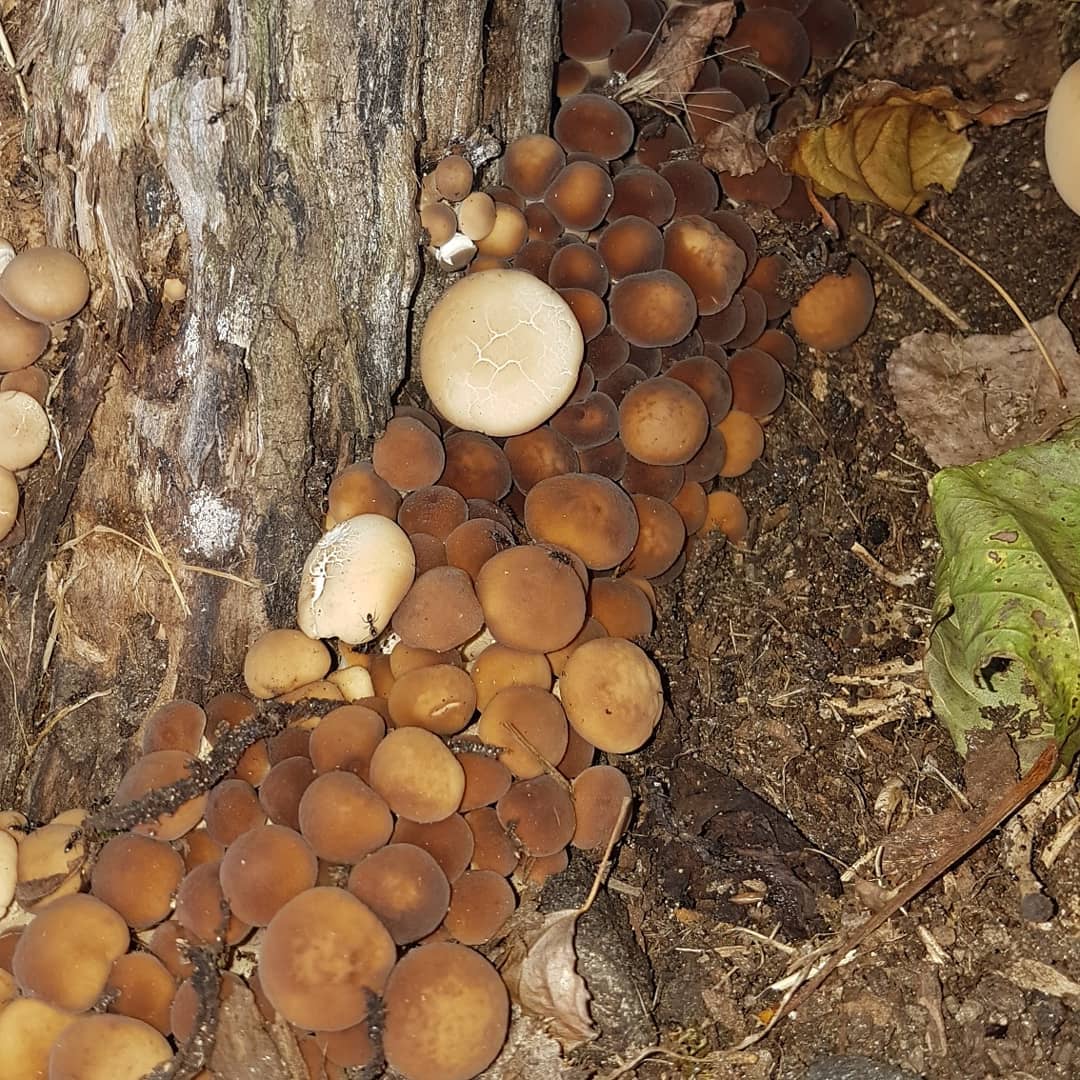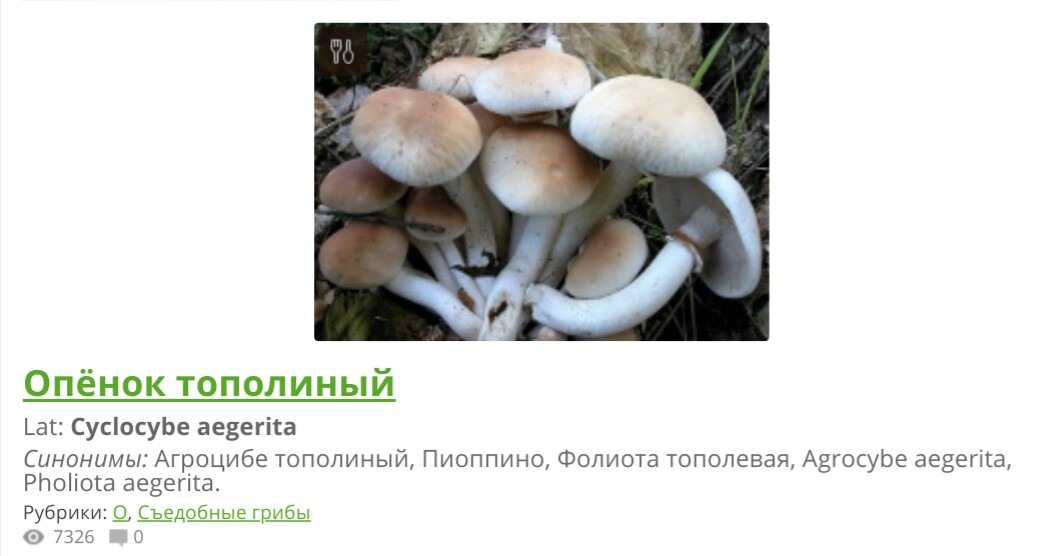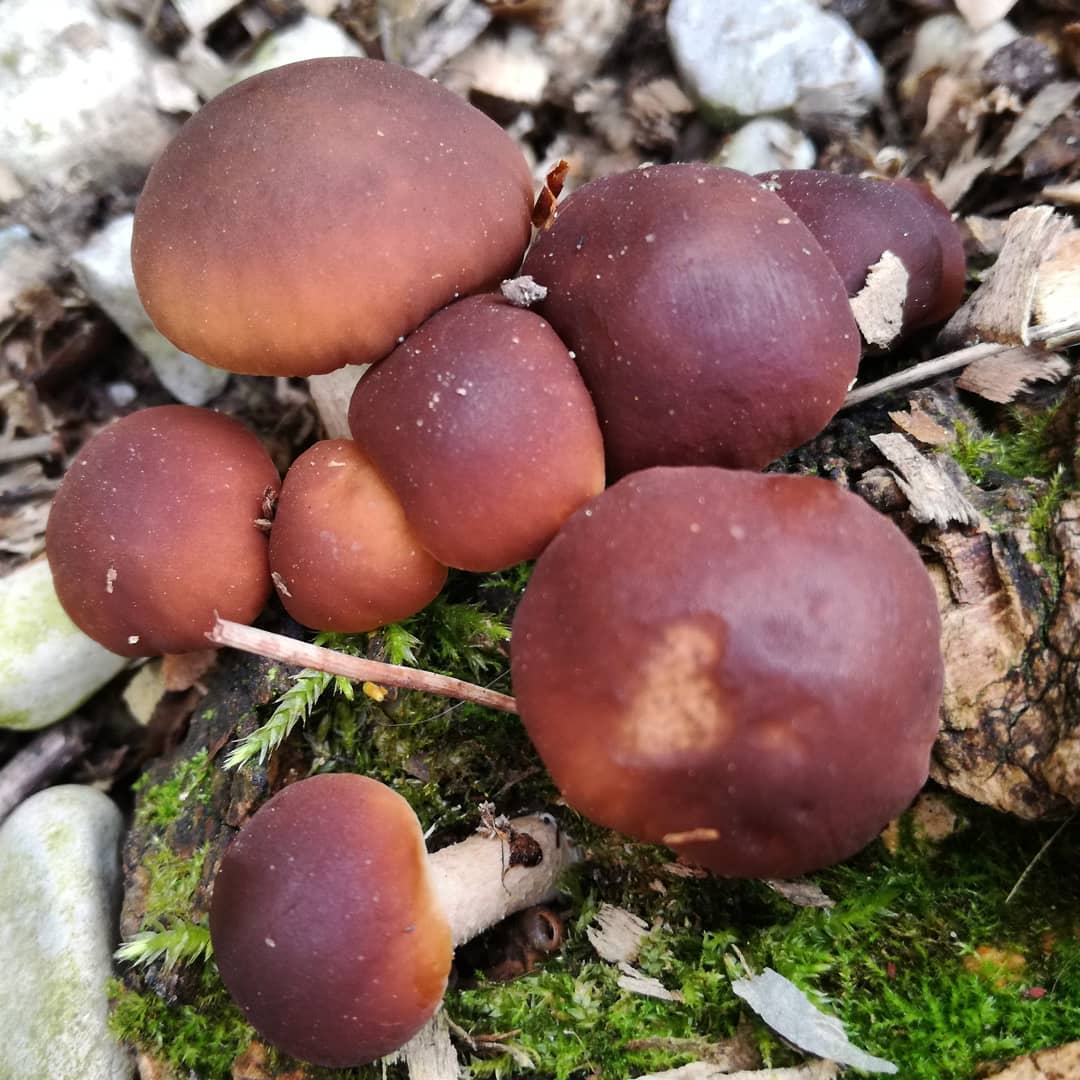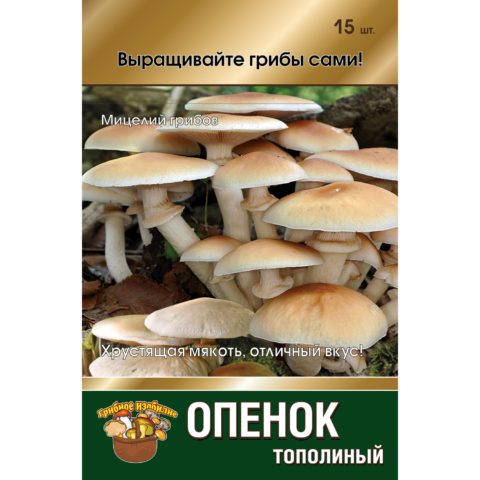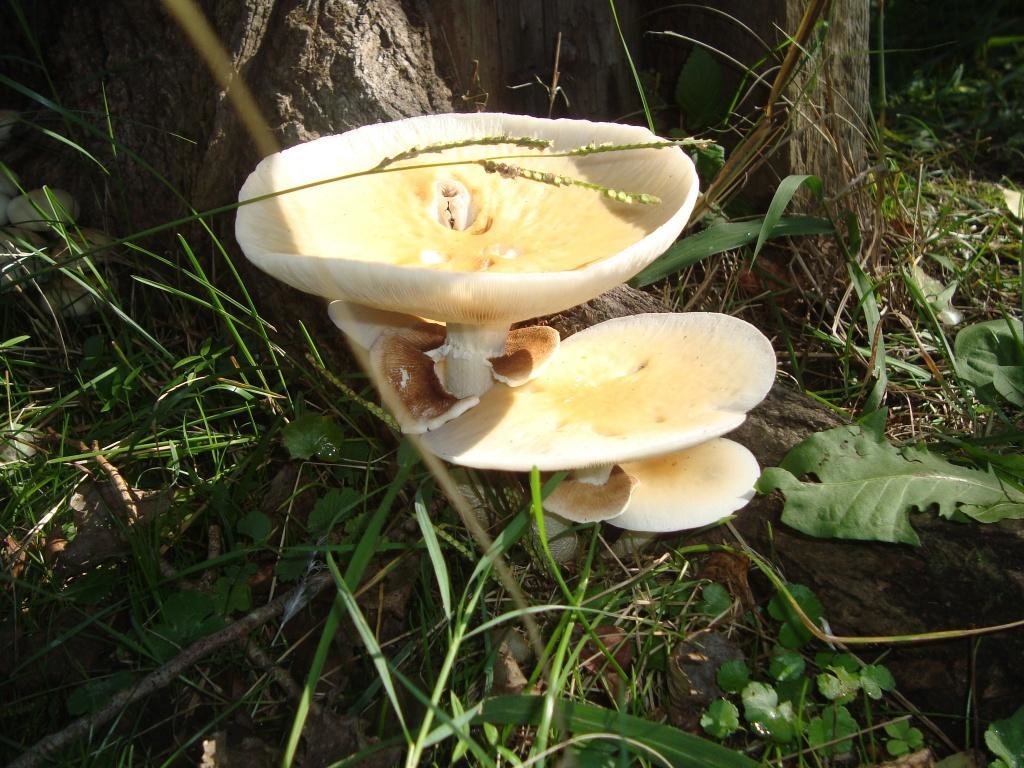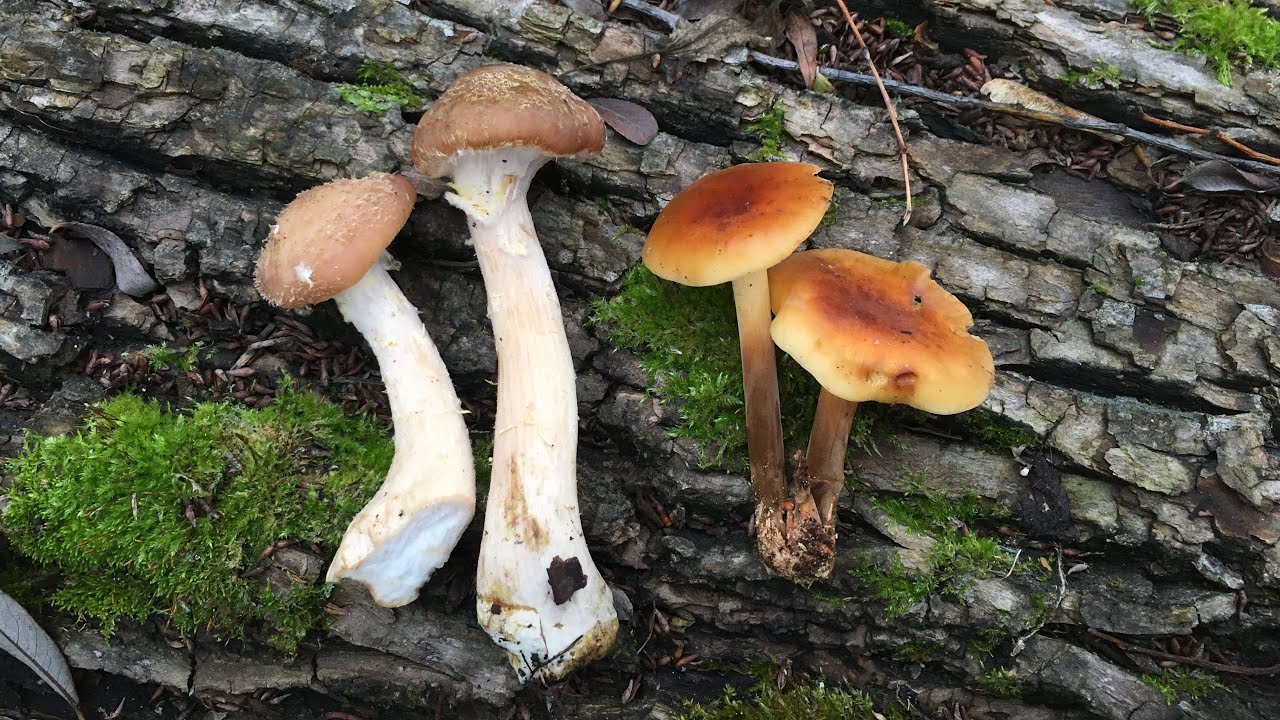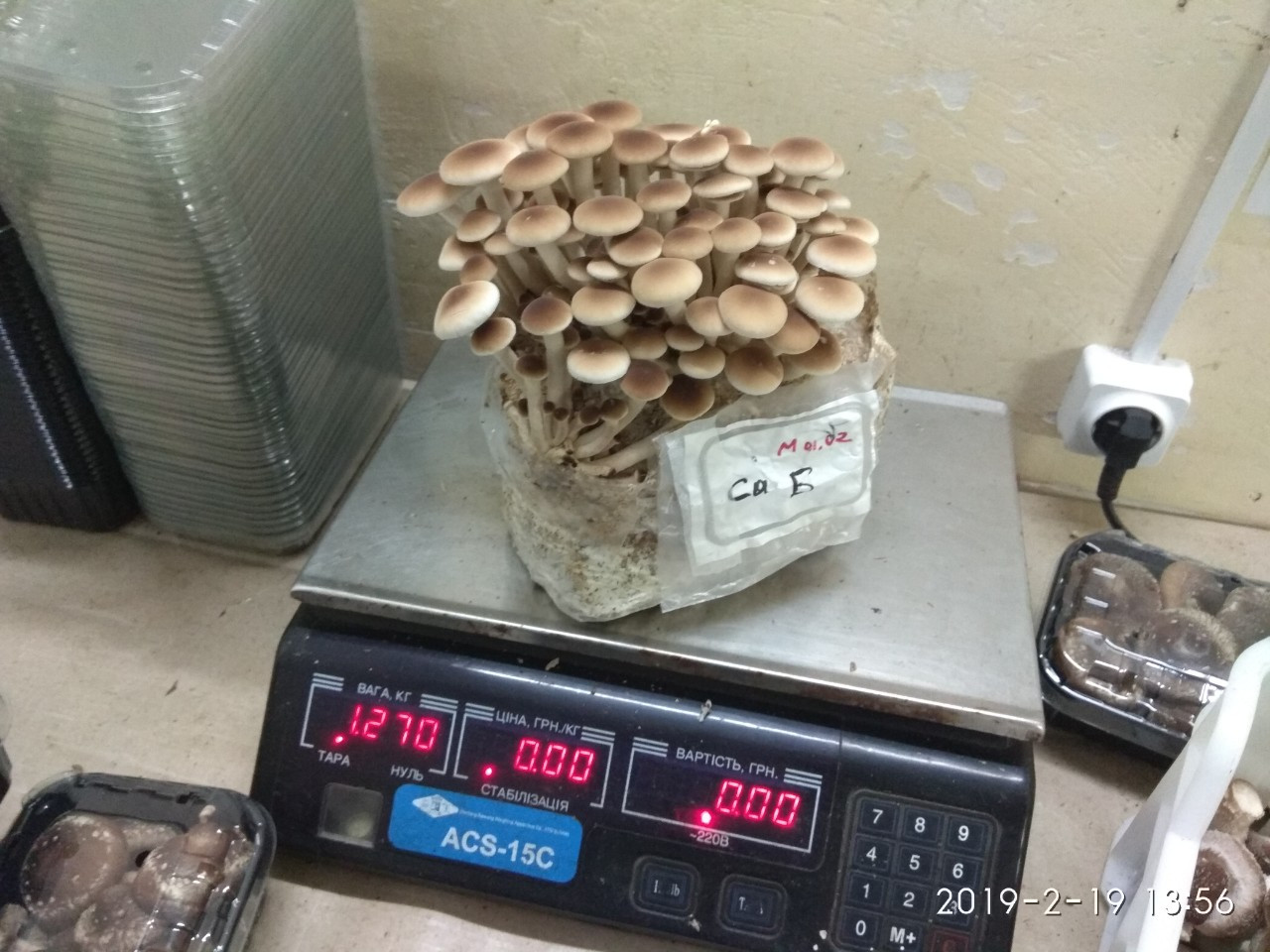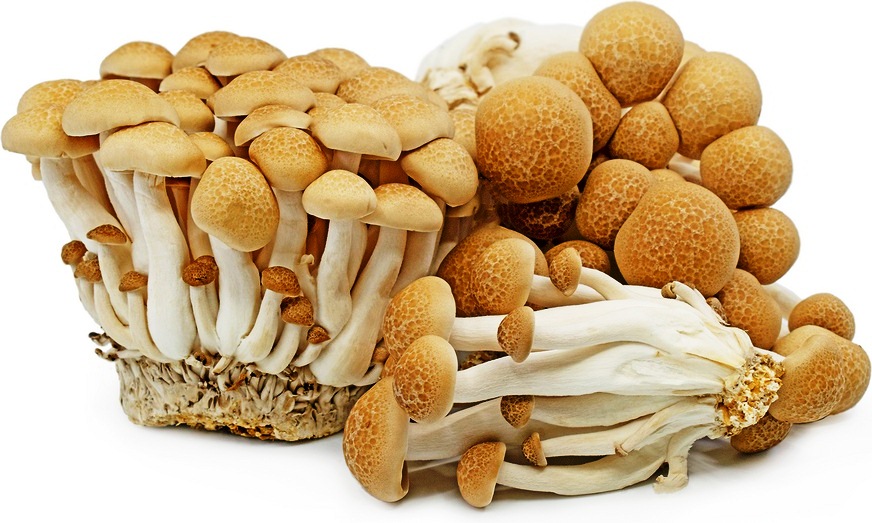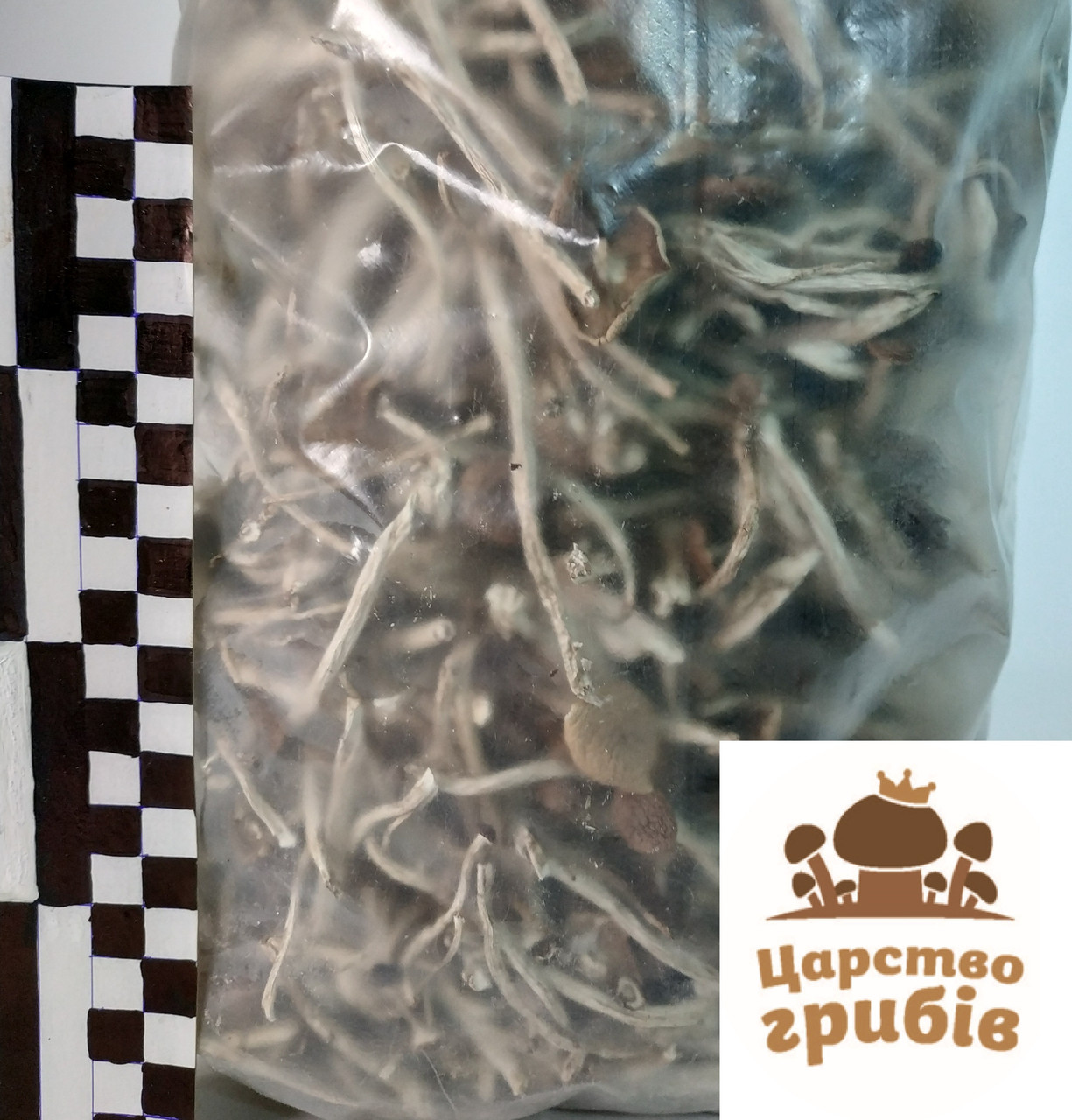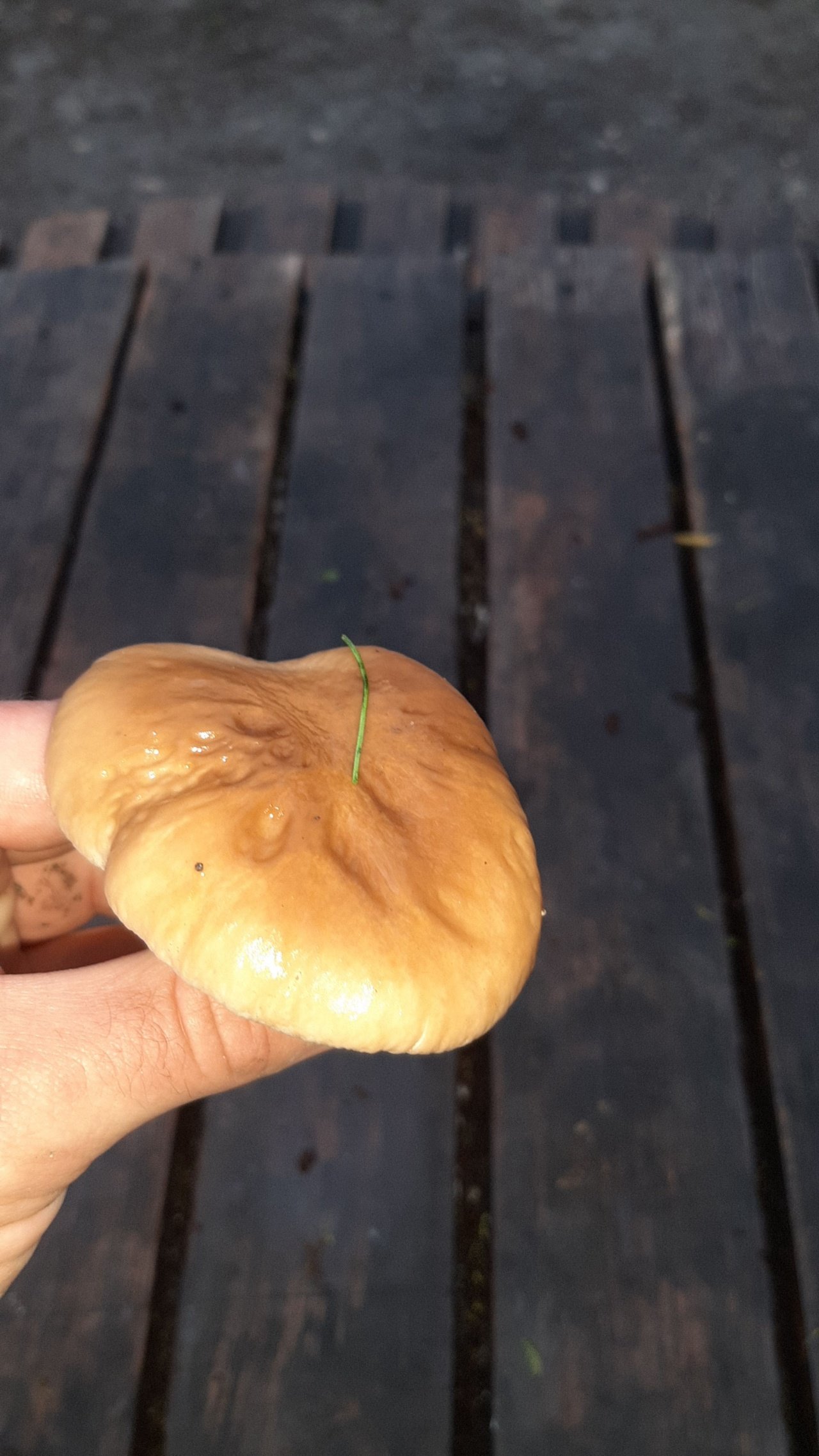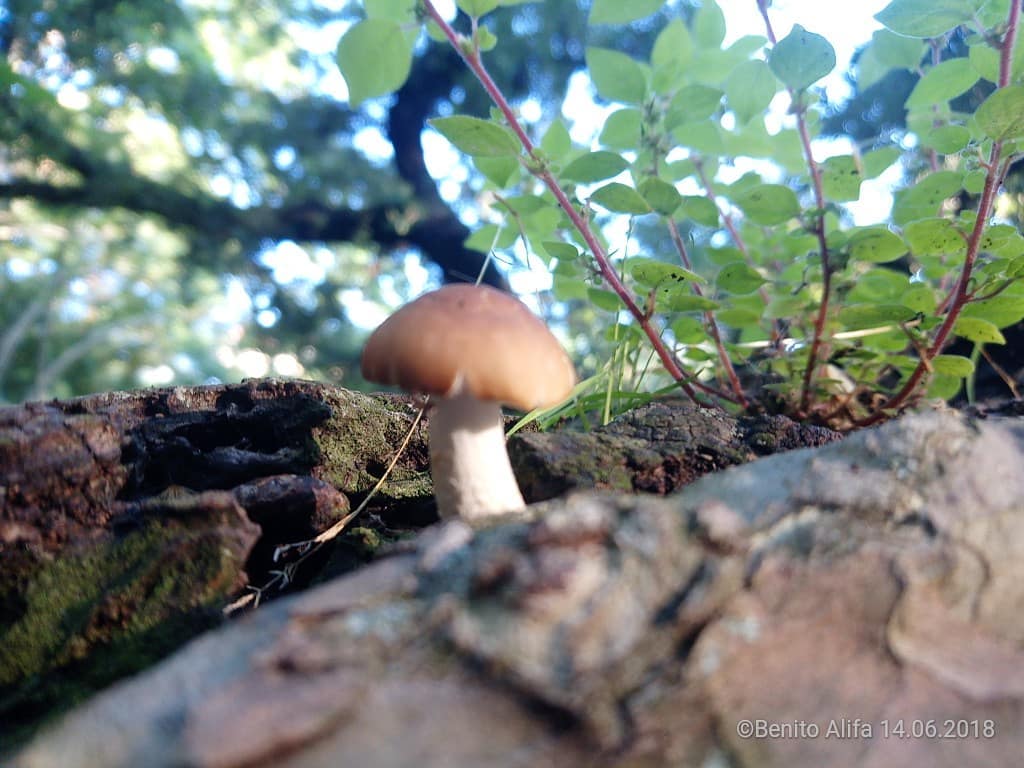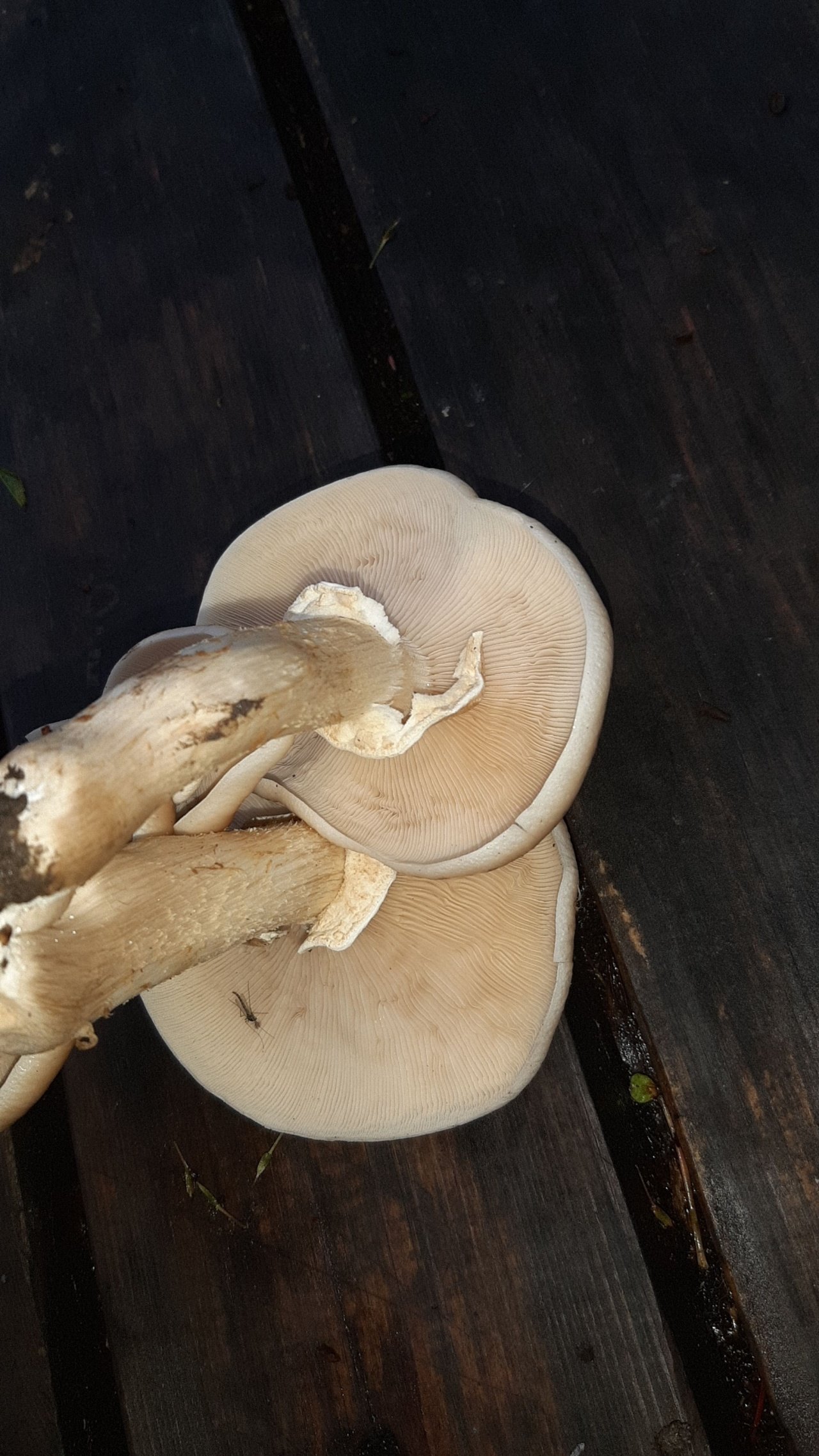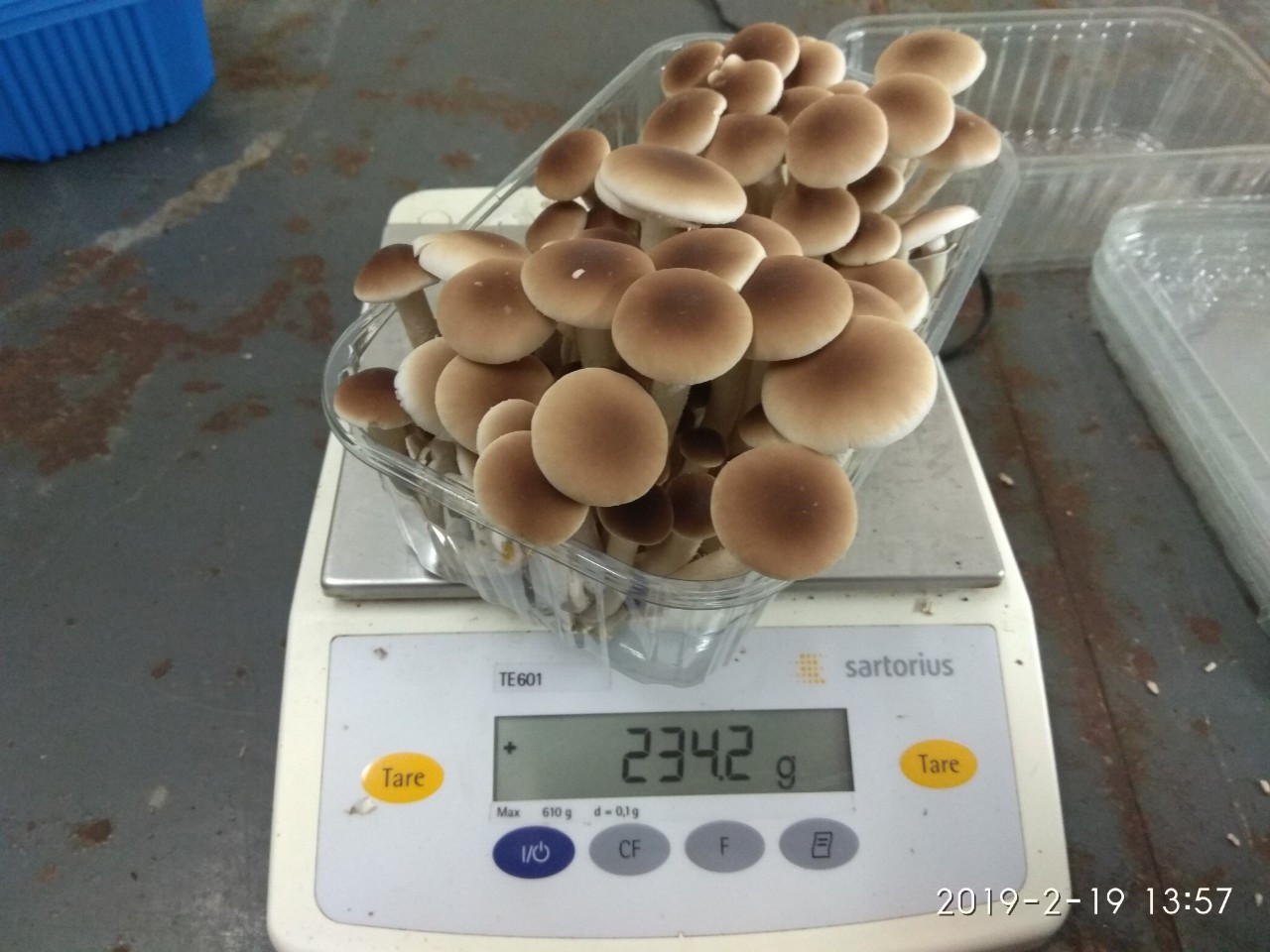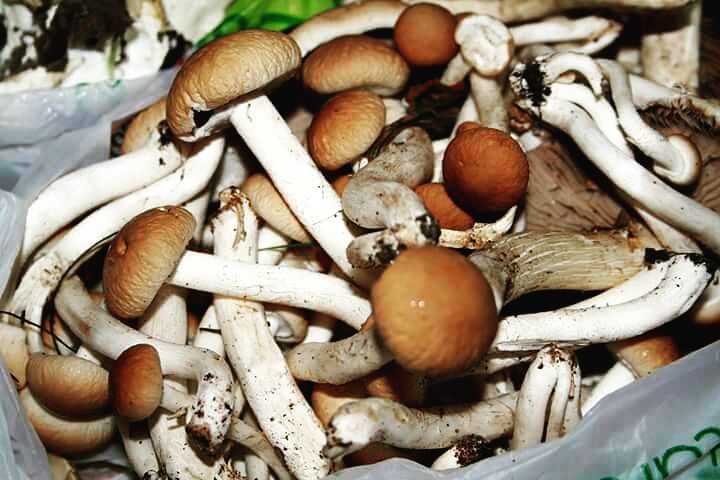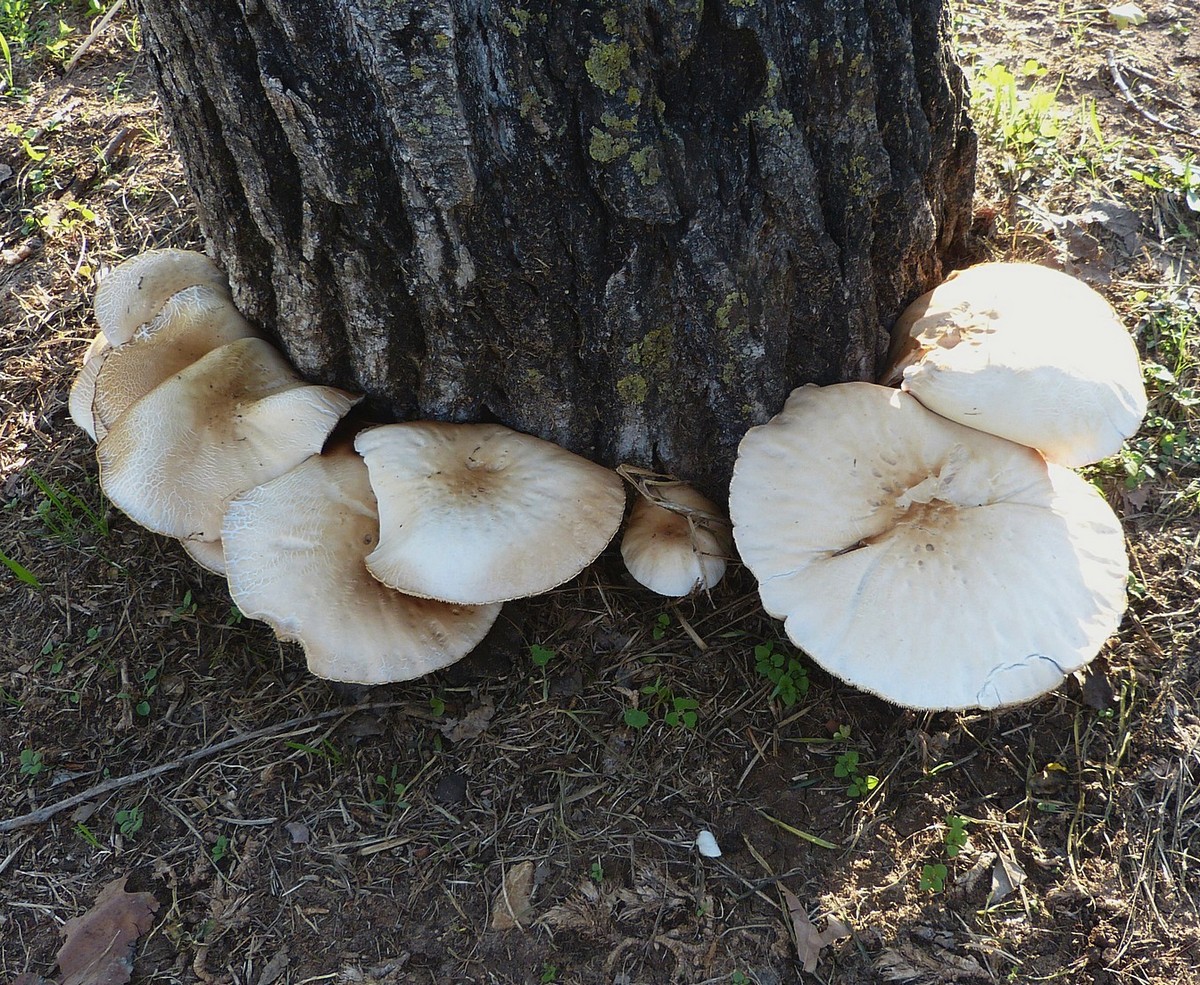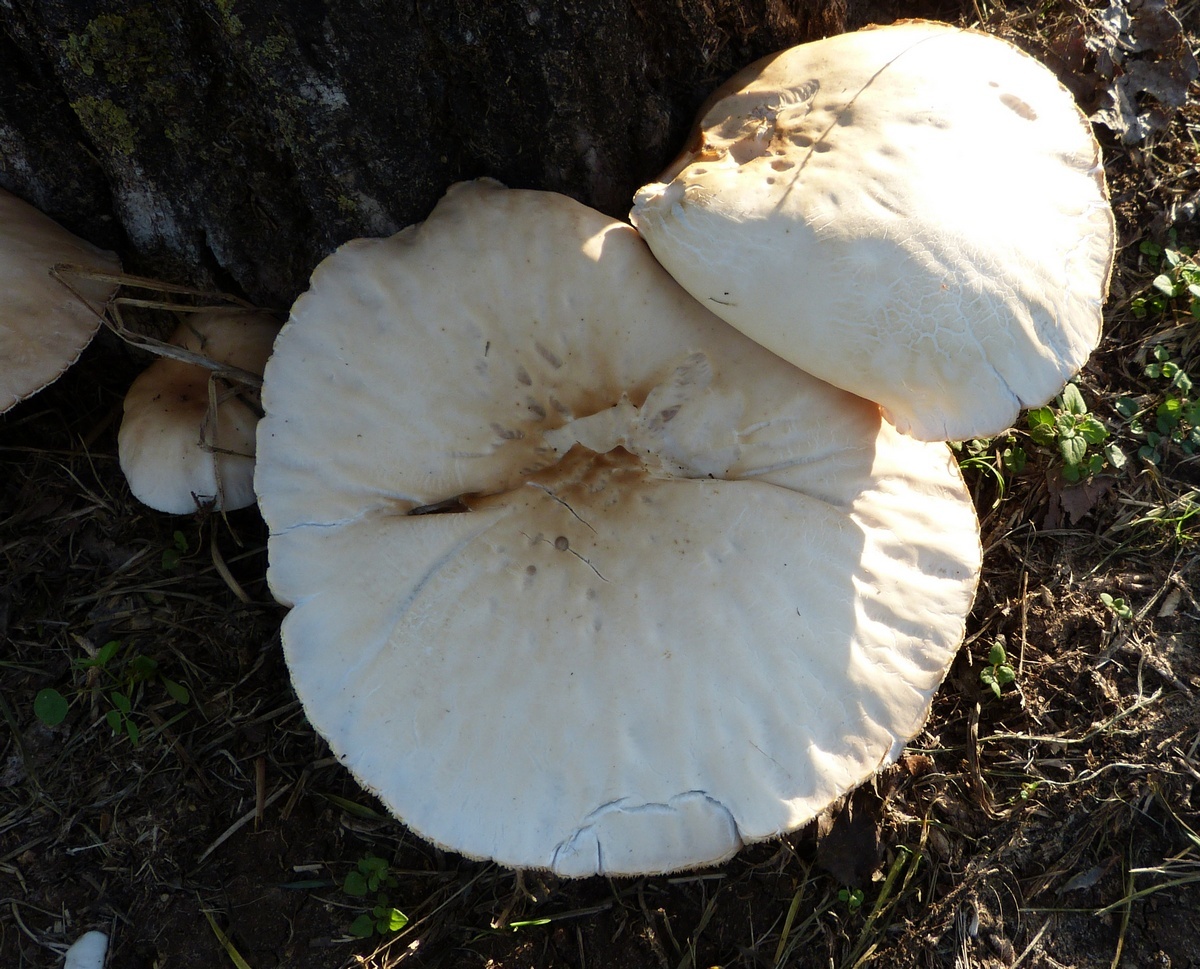Gray lamellar honey fungus (Hypholoma capnoides)
Other names of the fungus: Gray-lamellar pseudo-foil
Synonyms:
Seroplate honey fungus (Latin Hypholoma capnoides) is an edible mushroom from the genus Hypholoma of the Strophariaceae family.
Cap of gray-lamellar honeydew: 3-7 cm in diameter, from hemispherical in the youngest mushrooms to convex-outstretched in maturity, often with remnants of a private veil along the edges. The cap itself is hygrophane, its color strongly depends on humidity: in dry mushrooms it is dull yellow with a more saturated middle, in wet mushrooms it becomes brighter, light brown. As it dries, it begins to brighten symmetrically from the edges. The flesh of the cap is thin, whitish, with a faint odor of dampness.
Plates: Frequent, adherent, white-yellowish in young fruiting bodies, acquiring the characteristic color of poppy seeds as they mature.
Spore powder: Brownish violet.
The peduncle of the gray-lamellar honeydew: 5-10 cm in height, 0.3 - 0.8 cm in thickness, cylindrical, often curved, with a rapidly disappearing ring, yellow in the upper part, rusty-brown in the lower part.
Distribution: Lamellar honey fungus is a typical tree fungus. Its fruiting bodies grow in bunches on stumps and roots hidden in the ground. It grows only in coniferous forests, most often on pine and spruce, both in the lowlands and high in the mountains. It is especially abundant in mountain spruce forests. The honey fungus is widespread throughout the temperate zone of the northern hemisphere. You can collect it from spring to autumn, and often in mild winters. It grows like a "honey agaric", in large intergrowths, meeting, perhaps, not so often, but quite abundantly.
Similar species: Several common species of the genus Hypholoma, as well as, in some cases, summer honey fungus, are similar at once to the seroplate honeydew. It is, first of all, a poisonous pseudo-froth (hypholoma) sulfur-yellow with yellow-green plates, a cap with sulfur-yellow edges and a sulfur-yellow flesh. Next comes the pseudo-froth - brick-red hypholoma (H. sublateriiium) with yellow-brown plates and a brown-red cap, growing in bunches in summer and autumn in deciduous forests and outside the forest, especially on oak and beech stumps. Even without knowing the mushroom, it is only by formal signs that Hypholoma capnoides can be distinguished from the sulfur-yellow honey fungus (Hypholoma fasciculare): the one has green plates, and the gray-plastic one has poppy-gray. The rooted hypholoma (Hypholoma radicosum) mentioned in some sources, in my opinion, is completely different.
Edible: Seroplate honey fungus has a reputation for being a good edible mushroom. In my opinion, it is very similar to the summer mushroom; old specimens take on a musty, raw taste.
Video about mushroom Seroplate mushroom:
Gray-lamellar millet - a good edible mushroom has a blue-gray, poppy-colored, lamellar, yellow-brown cap, whitish flesh and a pleasant taste.
The seroplate honeydew for me was and remains the "second summer honeydew". When we were introduced, they told me so - here they say you are another summer honey agaric, which grows on pine stumps. I believed, which, however, I still do not regret. And what?..
Mushroom photo Seroplate honeydew from questions in recognition:
LAT
Specifications:
| Group: | Lamellar |
|---|---|
| Plates: | White, brownish gray |
| Colour: | Yellow or brownish yellow, bright orange, brown |
| Info: | The hat changes color when it gets wet |
Systematics:
| Department: | Basidiomycota (Basidiomycetes) |
|---|---|
| Subdivision: | Agaricomycotina (Agaricomycetes) |
| Class: | Agaricomycetes (Agaricomycetes) |
| Subclass: | Agaricomycetidae |
| Order: | Agaricales (Agaric or Lamellar) |
| Family: | Strophariaceae (Stropharia) |
| Genus: | Hypholoma |
| View: | Hypholoma capnoides |
Edible mushroom, assigned to the 4th flavor category.
How to cook Sulfur Lamellar honey?
Many different dishes are prepared from poppy seed foam, it is good boiled and fried, as well as dried and pickled. It is believed that only the caps should be eaten with this mushroom, since the stem is rather fibrous and tough.
Primary processing
After the honey mushroom got home from the forest, you should not postpone its preparation for a long time, you should immediately process the fruits. To do this, they need to be rinsed under running water and boiled in water, adding salt to taste.To remove possible bitterness and proceed with further preparations, these processes will be enough.
Pickling for the winter
To prepare delicious mushrooms for the winter table, you will need:
- honey mushrooms - 1 kg;
- water - 0.5 l;
- salt - 2 tbsp. l .;
- sugar - 1 tbsp. l .;
- vinegar - 2 tbsp. l .;
- garlic - 2 cloves;
- carnation - 3 buds;
- laurel - 2 leaves;
- horseradish and currant leaves, 2 pcs.
Pickling process:
- Add salt and sugar to the water, bring to a boil.
- Then pour in the vinegar, put the cloves and laurel, after boiling, add the mushrooms that have been pre-processed and boiled. Remove from heat after 5 minutes.
- Put horseradish and currant leaves on the bottom in pre-sterilized jars, put mushrooms on top, pour marinade so that it covers the fruits completely, throw a clove of garlic.
- Put the jars in a container for sterilization, carry out the procedure for 20 minutes, then roll up the lids.
Store pickled mushrooms in a cool dark place.
Salting
To enjoy salted mushrooms, you will need:
- boiled mushrooms - 1 kg;
- salt - 200 g;
- dill - 2 umbrellas;
- finely chopped garlic - 3 cloves;
- bay leaf - 3 pcs.;
- cloves - 3 pcs.
Cooking process:
- Put the mushrooms in layers in a prepared container. The first layer should be salt.
- Lay each layer with dill, garlic, laurel and cloves.
- Pour the rest of the salt on top, cover with gauze and press down with pressure.
- Leave to salt for 20 days in a cool dark place.
It is necessary to control the appearance of brine, which after 5 days should completely cover the mushrooms, or to increase the weight of the load. The gauze should be rinsed every 3-5 days to avoid mold. After 3 weeks, the mushrooms can be put in jars, filled with brine and refrigerated for storage.
Drying
Honey mushrooms should not be boiled or washed before drying. Forest debris should be removed with a dry brush, then string the mushrooms on a string and hang in a sunny, well-ventilated place. Dried mushrooms should become brittle, easy to break in your hands.
You can use the oven for drying, then the mushrooms are laid out on a baking sheet, the temperature in the electrical appliance is set at 60–70 ºС. Mushrooms are placed in a preheated oven, drying lasts at least 5 hours, at which time the fruits should be constantly turned over and their location relative to the heating elements should be changed.
What royal mushrooms look like: photos and descriptions of mushrooms
Latin name: Pholiota aurivella.
Family: Stropharia.
Genus: foliota or scaly.
Synonyms: royal honeydew, golden scaly, sulfur-yellow scaly, willow.
Edible: edible mushroom.

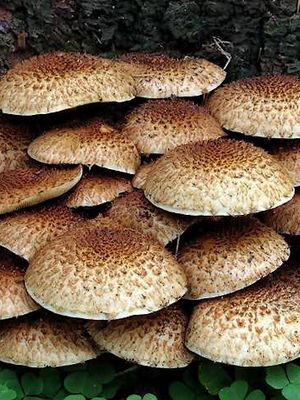
Hat: large cap diameter, at a young age from 5 to 10 cm; in adult specimens from 10 to 20 cm. The shape of the cap is broadly bell-shaped, but with age it changes to a flat-round shape. The color of the cap ranges from rusty yellow to dirty gold. The entire surface of the cap is dotted with flaky, reddish scales.
Leg: length from 6 to 12 cm, diameter from 1 to 2 cm. Dense, yellow-brown shade with brownish scales located on it. The stem is framed by a fibrous ring, but as the fungus grows, the ring disappears.
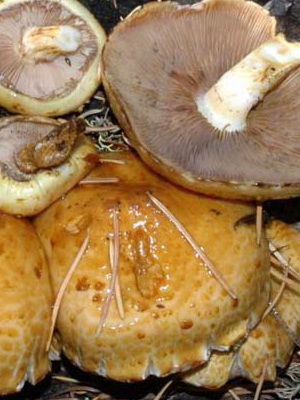
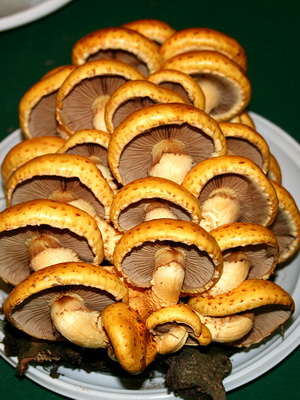
Plates: wide and adherent to the peduncle. The color of the plates at a young age of the fungus is light straw. As they mature, the color turns olive or brown.
Pulp: has a pleasant smell, whitish-yellow in color.
Application: mushrooms are very beneficial for people with anemia. They contain a lot of magnesium and iron - substances that are involved in hematopoiesis. Eating royal autumn honeydew helps to replenish the lack of minerals in the human body and increases hemoglobin.In addition, this type of honey agaric regulates the proper functioning of the thyroid gland.
Distribution: often found in deciduous forests, as well as in coniferous forests of swampy areas throughout Russia.
Photos of royal mushrooms will help novice mushroom pickers distinguish this species from false mushrooms:

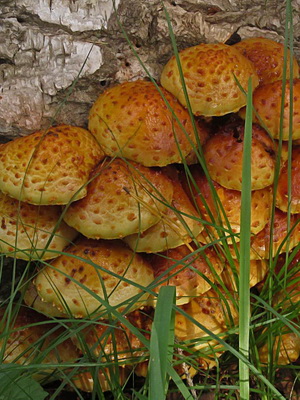
Where do autumn royal mushrooms grow?
It is worth noting that edible species of royal honey agaric grow on damaged tree trunks, old, long-felled stumps. They can also be found on the ground next to the roots of dead deciduous and coniferous species. Fruiting of golden scales or royal honey agarics begins in August and continues until the end of September. Residents of the Primorsky Territory can pick these amazing mushrooms from mid-May to mid-September.
Where else do royal mushrooms grow, and which trees are preferred most? Usually this species of honey agaric settles on the trunks of deciduous trees, especially on alder or willow, sometimes it chooses birch and birch stumps, less often - coniferous trees in swampy areas. Take a look at the photos below showing what the royal mushrooms look like on the trees in the forest:

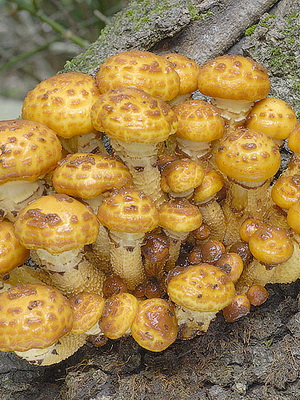
Sometimes even experienced mushroom pickers, due to the rare appearance of golden scales, confuse them with false mushrooms that grow in the same territories. Therefore, we suggest that you carefully read the photos of edible and false royal mushrooms:
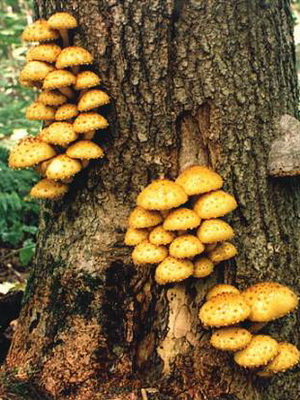

As already mentioned, scales or royal mushrooms are edible mushrooms. However, before using it, it must be boiled in salted water for 20-25 minutes. Since royal mushrooms have excellent taste, they are used in appetizers, salads, first and second courses. Especially great flakes are combined with fried or boiled potatoes. In addition, many housewives make preparations for the winter from these mushrooms: they pickle, salt, freeze and dry.
Sometimes honey agarics can be found in pine forests and spruce forests. What does a royal mushroom look like if you find it in a coniferous forest? Usually, flakes collected in deciduous forests are different from those growing in conifers. The first difference between honey agarics found in pine forests is the dark color of the cap and scales, and the second is the bitter taste. However, royal mushrooms contain a lot of vitamins C, PP and E. In addition, there are only 22 calories per 100 g of flake, so the calorie content of this species is very low. That is why they are useful for vegetarians and those who follow a low-calorie diet. In terms of the content of phosphorus and calcium, royal mushrooms even compete with fish.
Experts ranked royal mushrooms in the IV category of edibility. That is why in other countries they are not eaten and are not even harvested, since this category abroad refers to inedible species. However, in Russia they are prepared in the same way as ordinary autumn mushrooms. They are first boiled in salted water and only then the first courses are fried, stewed or cooked. In addition, royal autumn mushrooms are used in other culinary recipes: they prepare mushroom stew, julienne, make caviar, pates, sauces, hodgepodge and mushroom fillings for pizzas and pies.
Although golden flake is widespread on the territory of Russia and is well recognizable, it is not collected so often. Perhaps this is due to the fact that very few people are familiar with this type of mushroom. However, true connoisseurs of mushroom delicacies put it on a par with autumn mushrooms and even boletus mushrooms. We offer you to watch a video of collecting royal honey agarics in deciduous forests by lovers of "quiet hunting":
Gray lamellar honey fungus: where false mushrooms grow
Seroplate false honey fungus belongs to the conditionally edible group of mushrooms and belongs to the Stropharia family. Its Latin name is Hypholoma capnoides. Mushroom pickers are also called poppy or pine false foams.
Description of seroplate pseudo-foam
The cap of this type of mushroom has a diameter of 2-8 cm.Its color depends on the moisture content and age of the mushroom body: in dry mushrooms it is light yellow with a rich center, in wet mushrooms it is light brown. There is a whitish film on the plates.
In adult mushrooms, the cap evens out, and its shade changes to orange-brown with dark blotches. At the same time, the film breaks down and hangs on the body in the form of whitish flakes. In wet weather, the surface of the cap becomes sticky.
Gray-lamellar pseudo-foam can have a straight or slightly curved stem, on which there are practically no rings. Its upper part is colored light yellow, and the lower part is brown.
The flesh of the mushroom cap is thin, white or light yellow, almost odorless. However, old mushroom bodies are distinguished by a pronounced odor of moisture. Spores are gray-blue in color.
Where grow
Most often, gray mushrooms are found in the Northern Hemisphere, in regions with a temperate climate. They grow in forests with conifers, but sometimes they can also be seen in mixed woodlands. Among deciduous trees, poppy pseudo-froth rarely grows.
In most cases, these fungal bodies are found on tree stumps, rotting tree trunks and roots in lowlands and hills. Mushroom pickers collect them from early summer to late autumn, but the peak of ripening of fruit bodies occurs in September-October. False heaps prefer to settle in large clusters, single fruiting bodies rarely grow.
Some varieties of fungi form a symbiosis (mycorrhiza) with plants, and the gray-lamellar type pseudo-weavers act as symbiotes. Their myceliums go deeper into the root system of plants and provide constant nutrition to the fungal bodies.
For plants, this union is also useful, since the roots of false hoofs deliver minerals from the soil to their rhizomes. As a result, the pines grow tall and powerful. However, if gray mushrooms grow on unhealthy trees, then the latter die.
How do they reproduce
Like other types of mushrooms, gray-lamellar mushrooms reproduce through spores and have a smooth surface and an elongated shape. The spore powder has a deep purple or gray-blue color.
Disputes are recorded on the plates. They spread over the terrain with the help of the wind. After the spore hits the surface of the earth, it begins to actively form mycelium.
Edibility of honey fungus
Sulfur-lamellar mushrooms are considered conditionally edible. Most of the mushrooms in the Strophariacea family are poisonous, but some types, including the gray puffins, can be used as food, but only after careful processing.
To taste, this subspecies belongs to the fourth category. False foam is added to various culinary dishes, but before that it must be boiled for 15 minutes. At the same time, mushroom bodies can be dried, pickled and made on their basis mouth-watering pickles. Gray honey mushroom is characterized by a pleasant and mild taste and aroma.
It is advisable to eat young fruiting bodies for food, because old mushrooms have an unpleasant odor. In this case, it is recommended to collect only the caps of the mushrooms, since their legs are too hard.
Similar species
This type of mushroom can be confused with other members of the Gifoloma genus. Most similar species:
- Brick red false froth. This mushroom got this name for its specific color. The fruit body is not poisonous, however, it is not customary to eat it. The peculiarity of the brick-red variety is that its plates are yellow in color. The pulp is dense and bitter in taste, so dishes made from brick-red honey mushrooms are not particularly appetizing.
When collecting seroplate false mushrooms, you should exercise maximum vigilance, because eating poisonous mushrooms similar to it can lead to extremely undesirable health effects.

